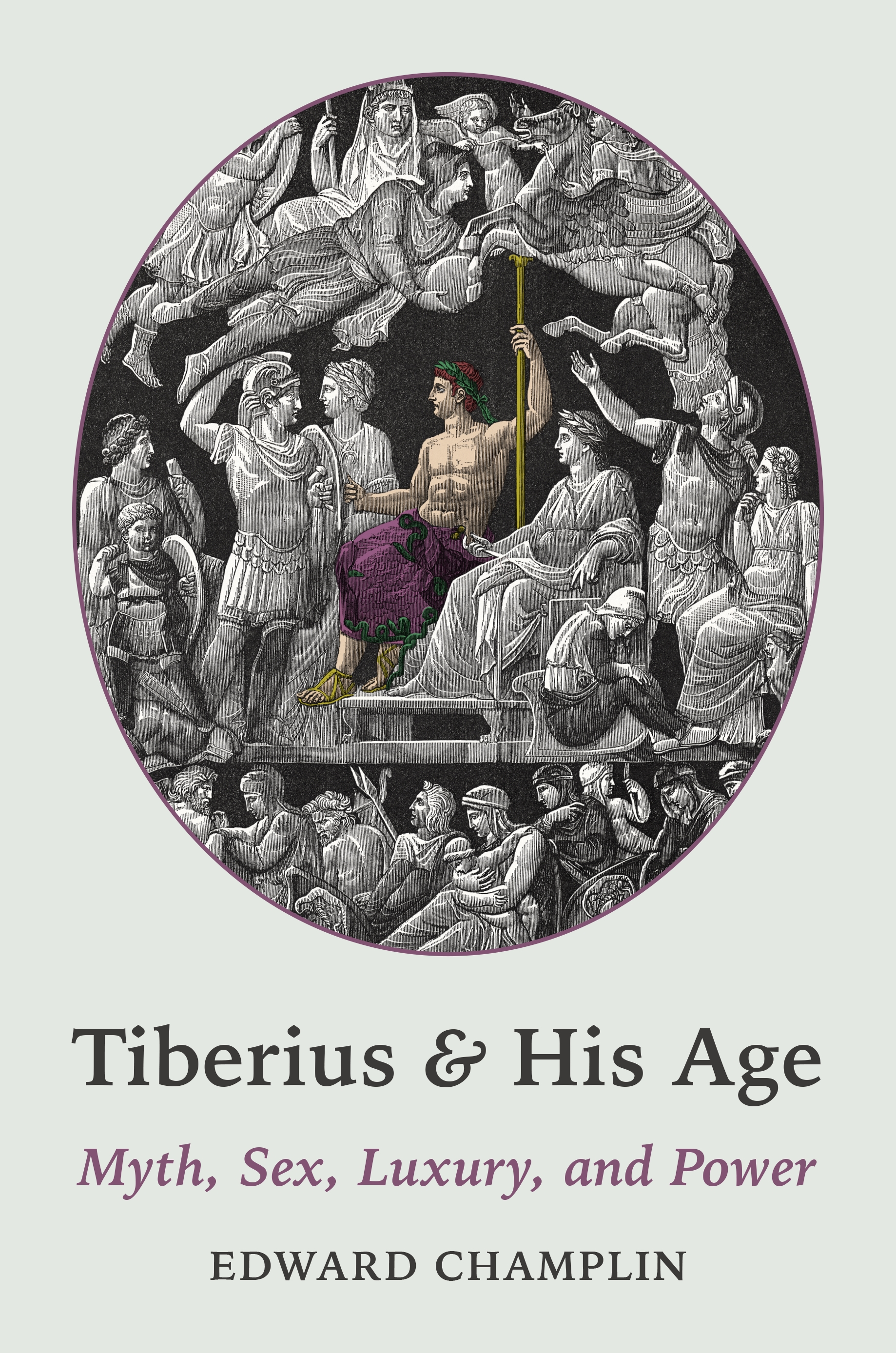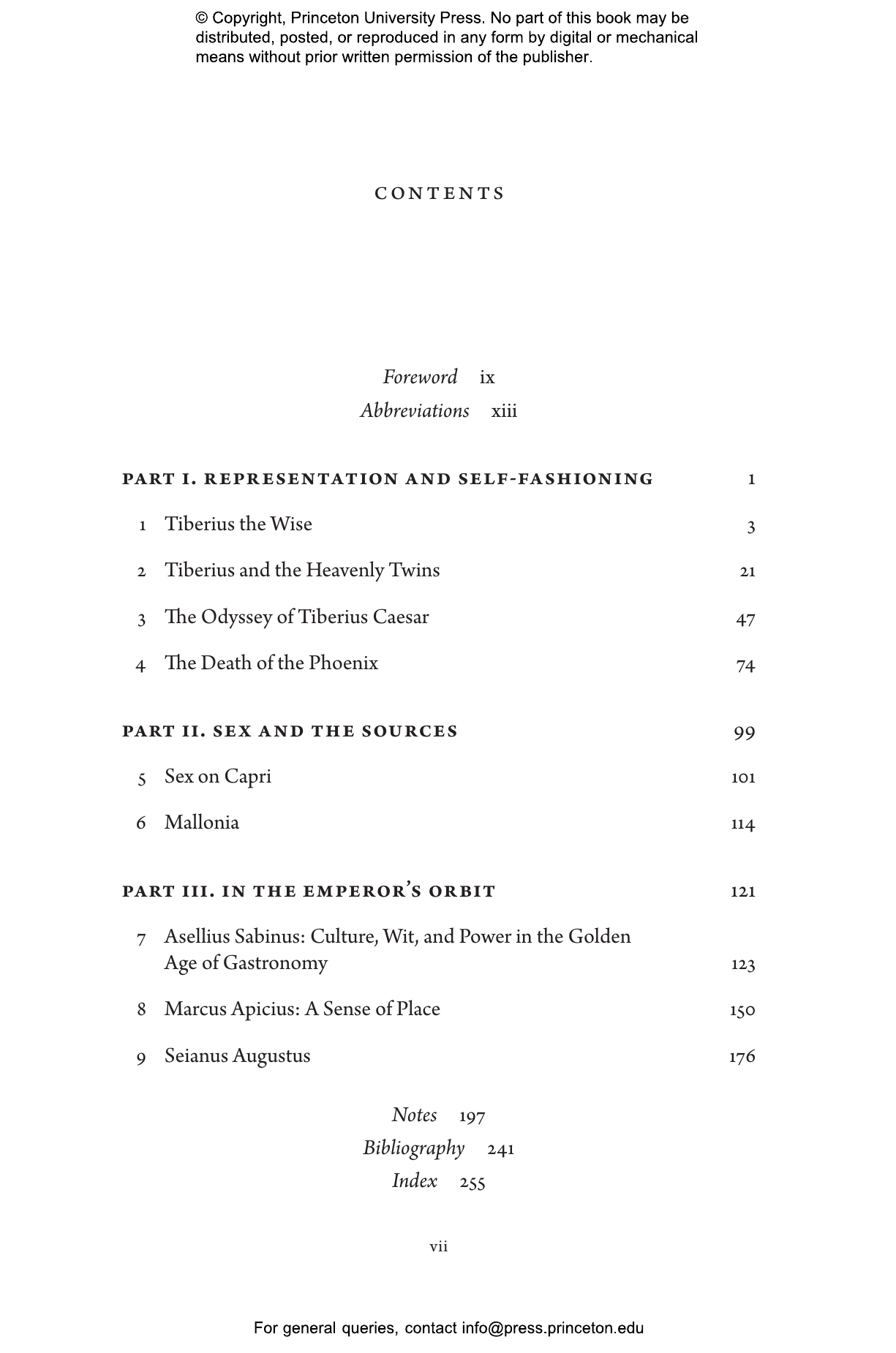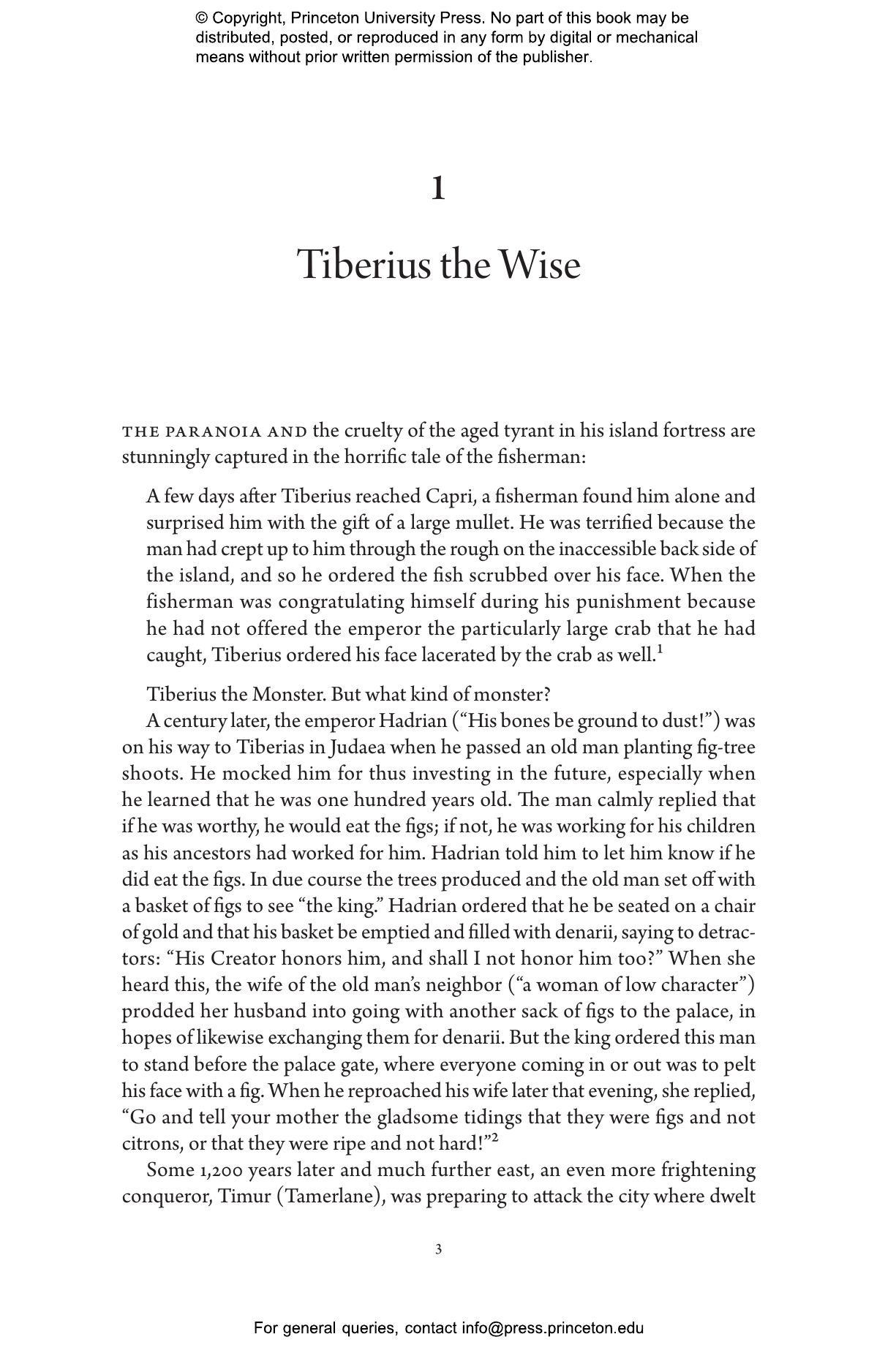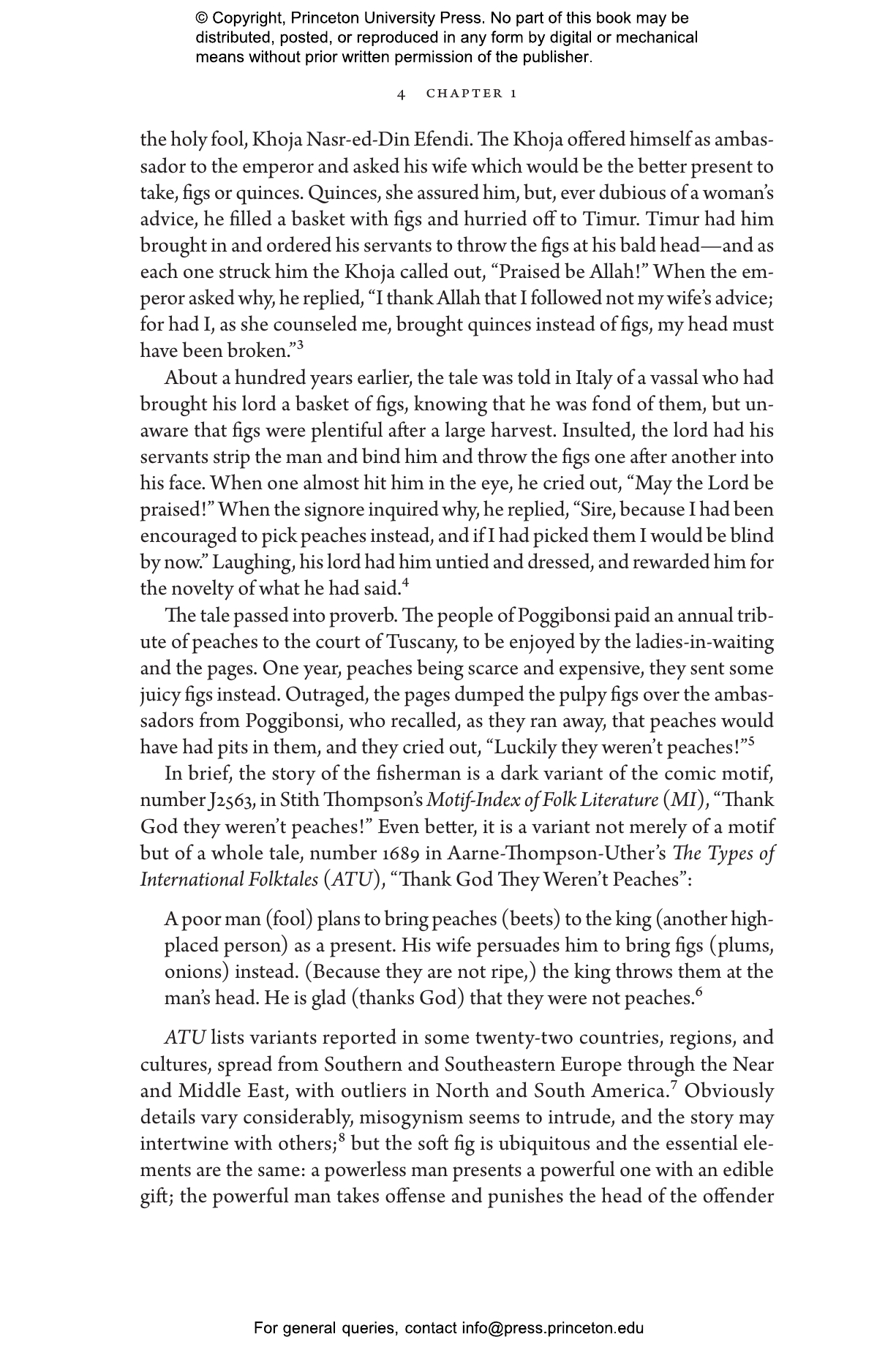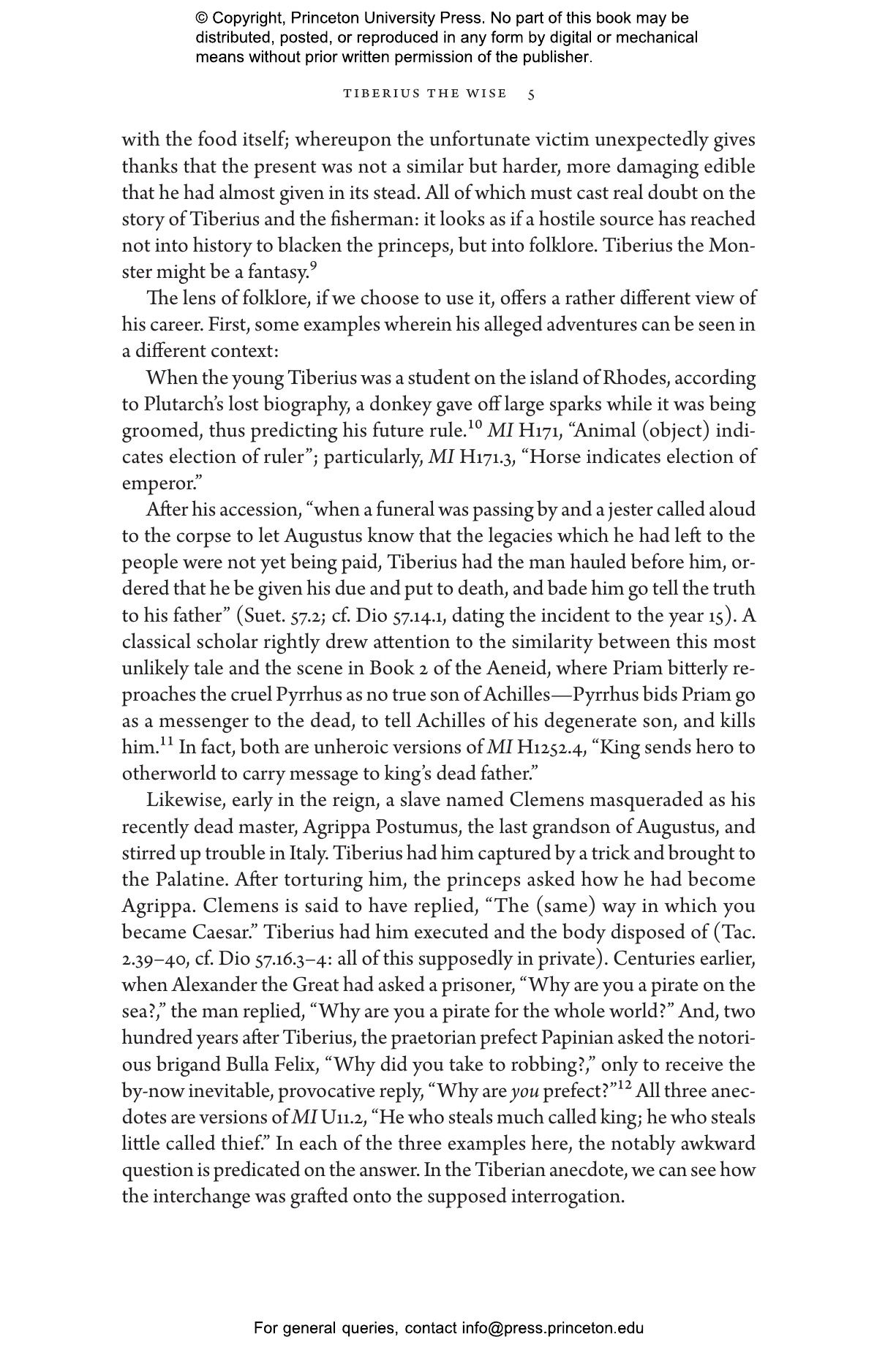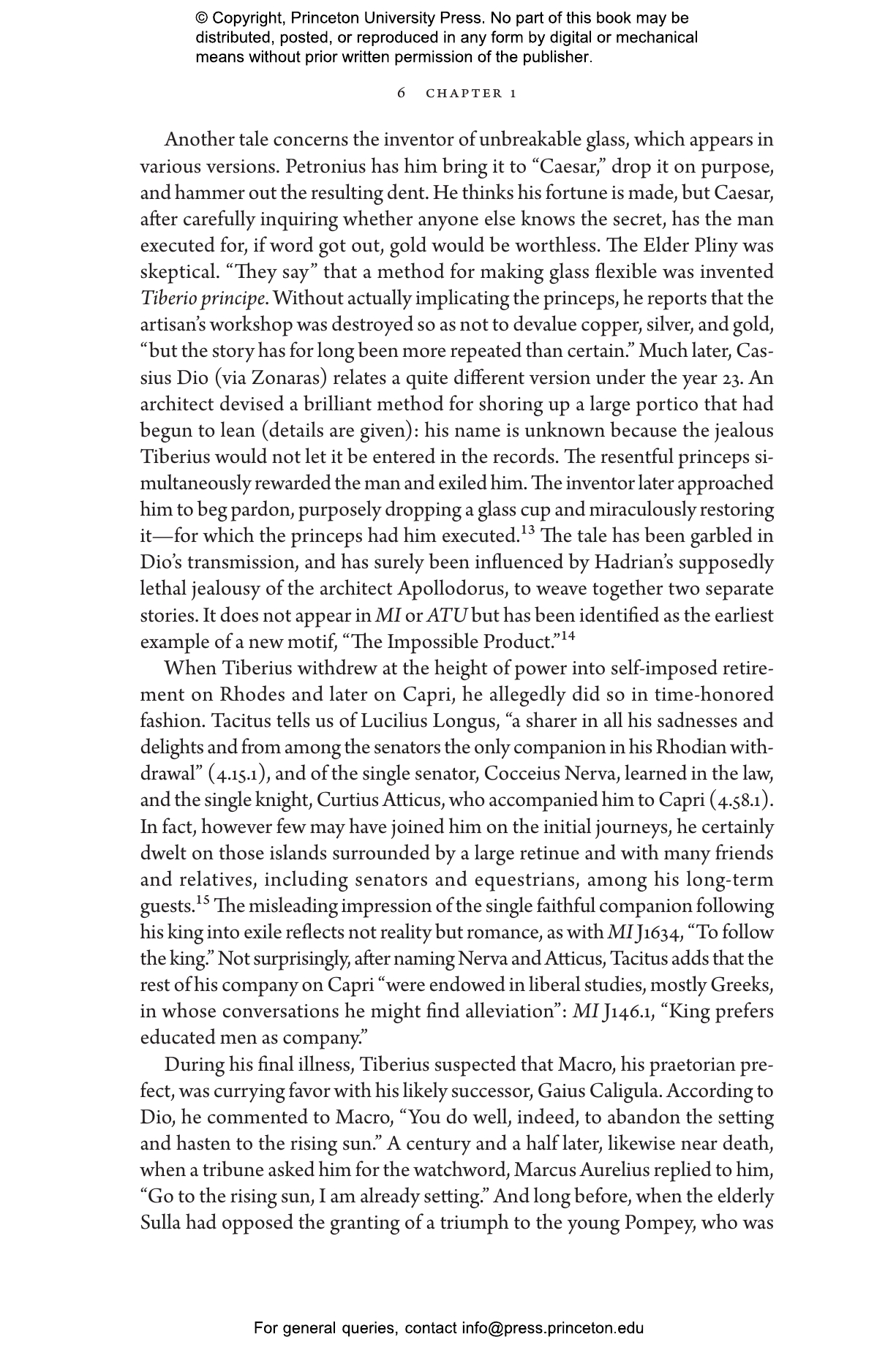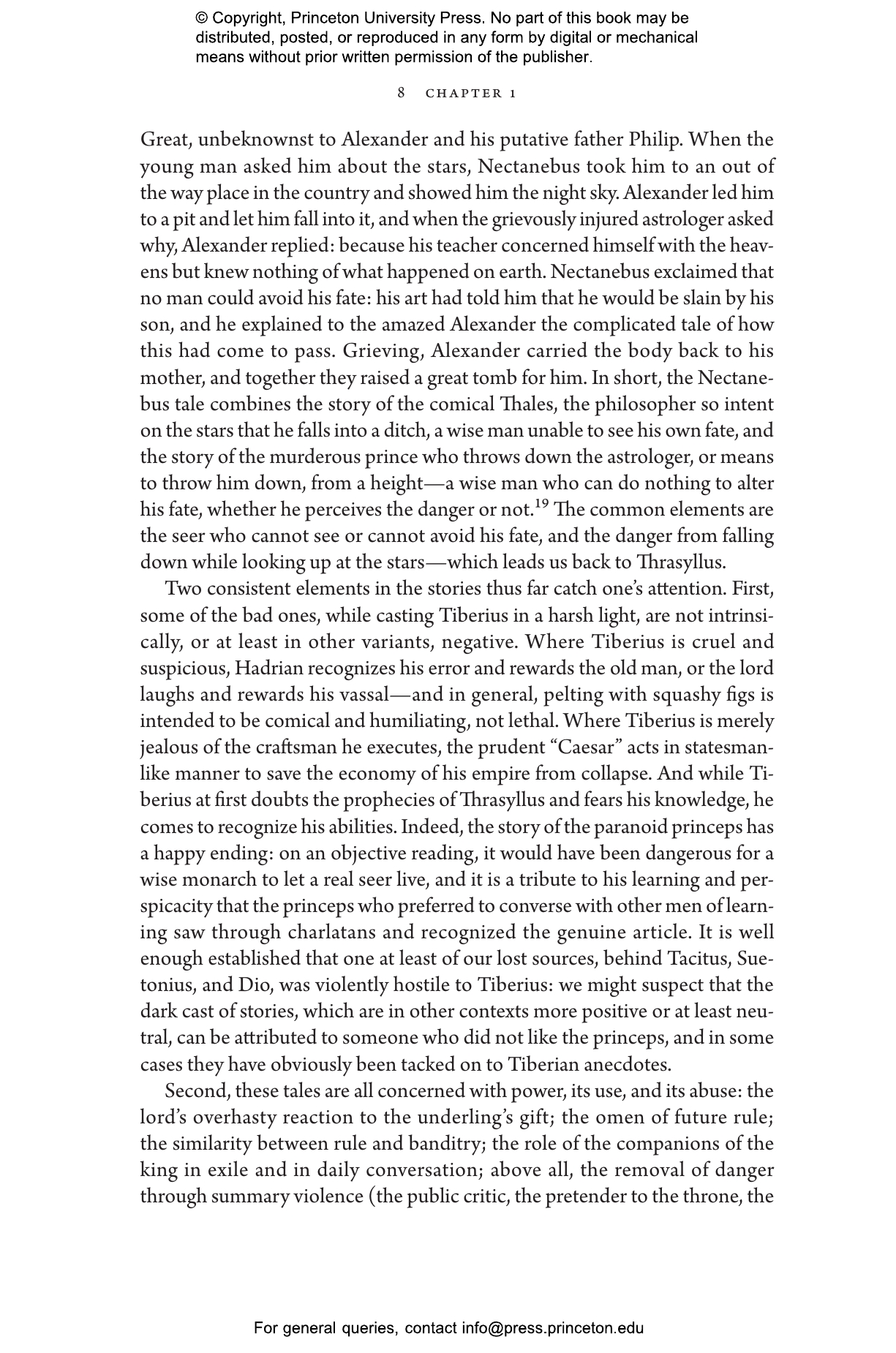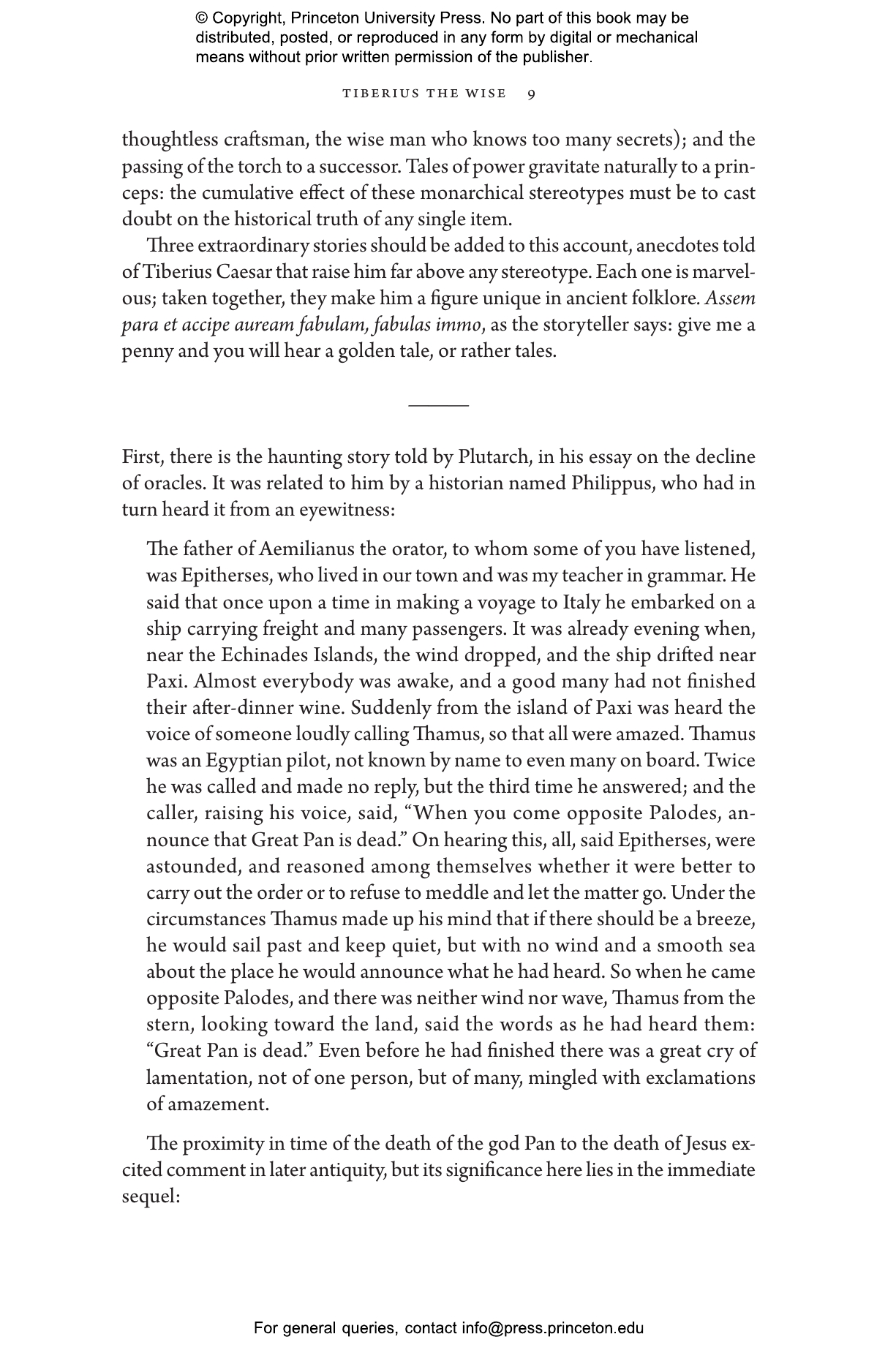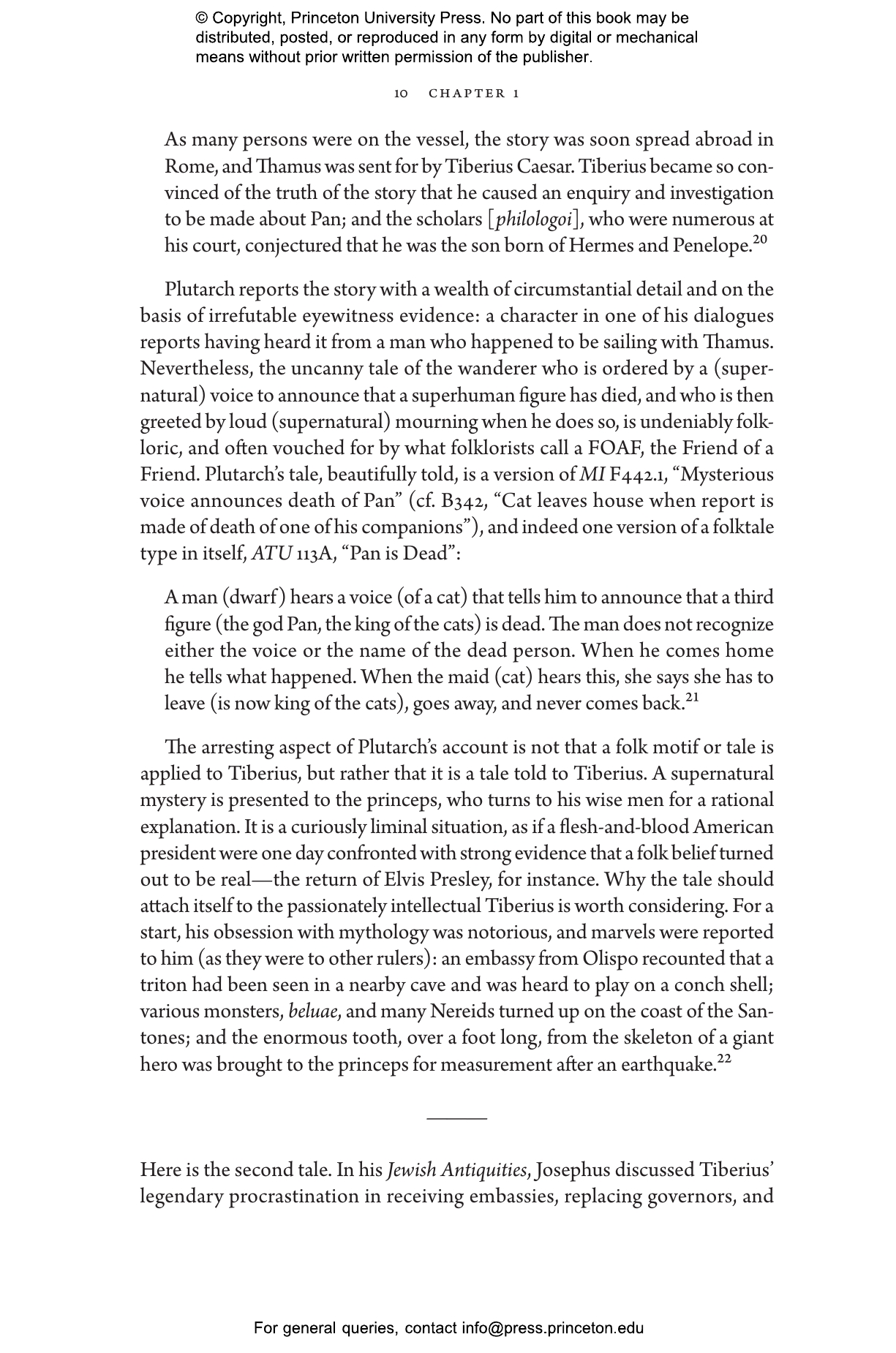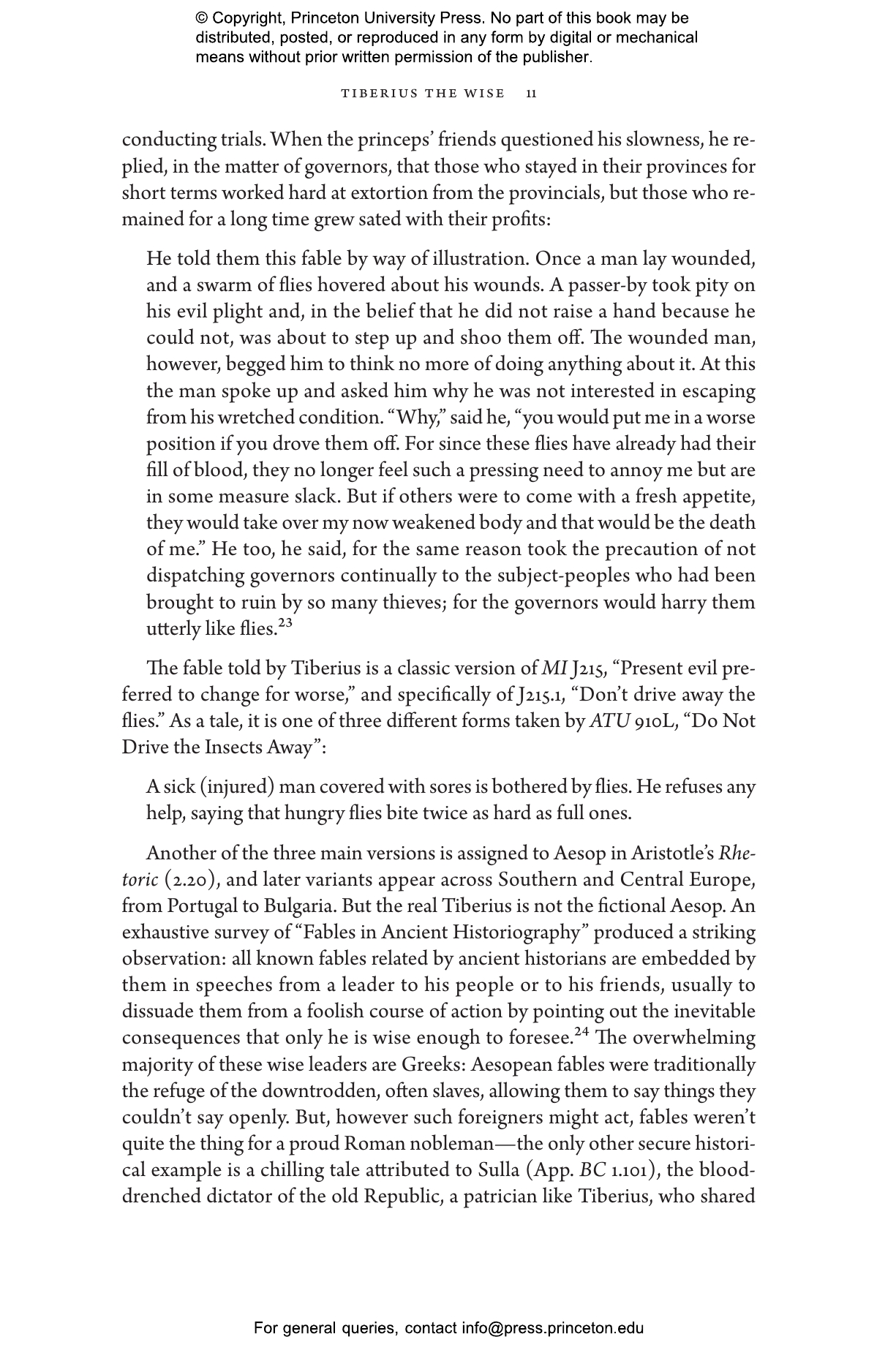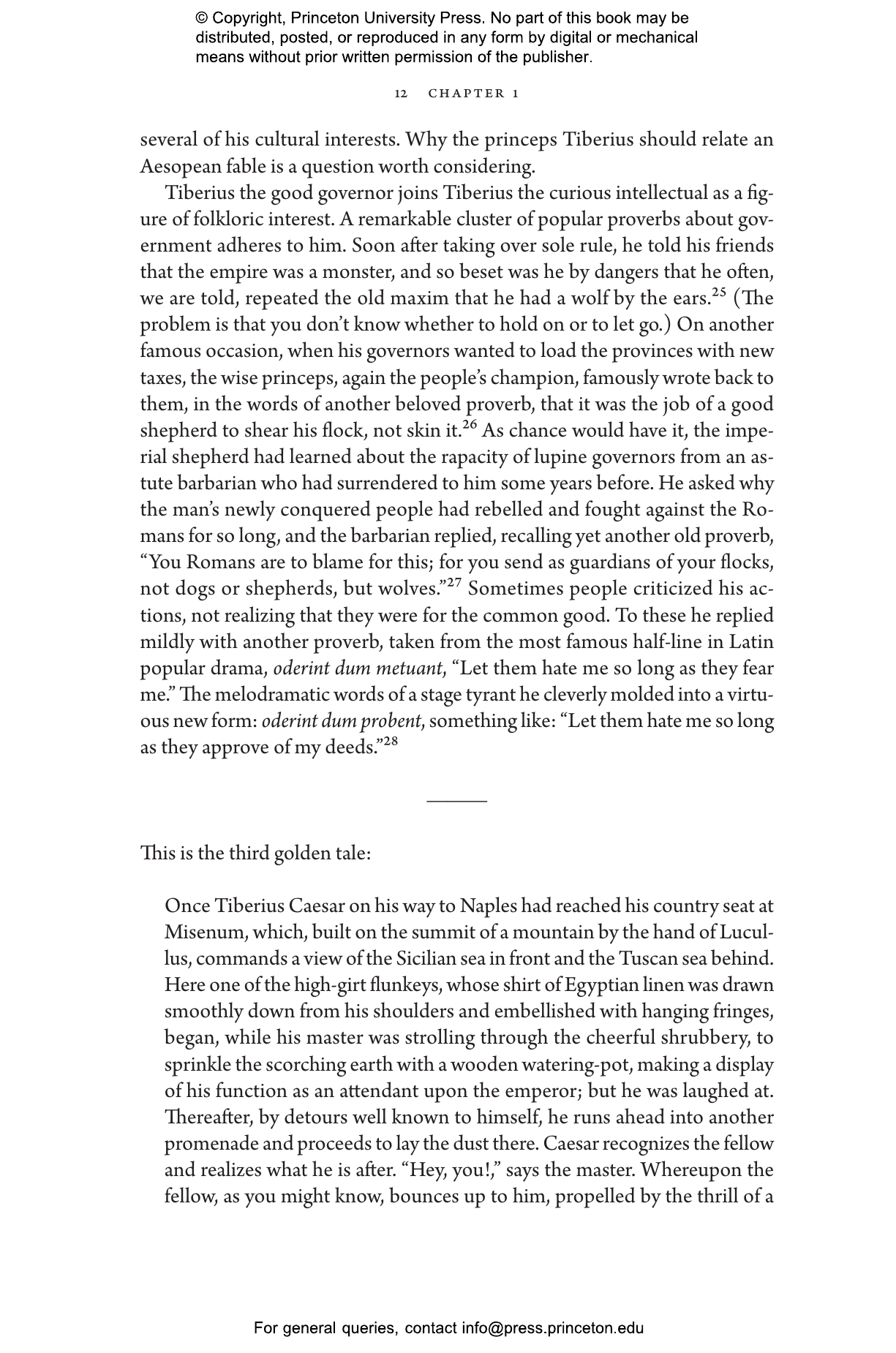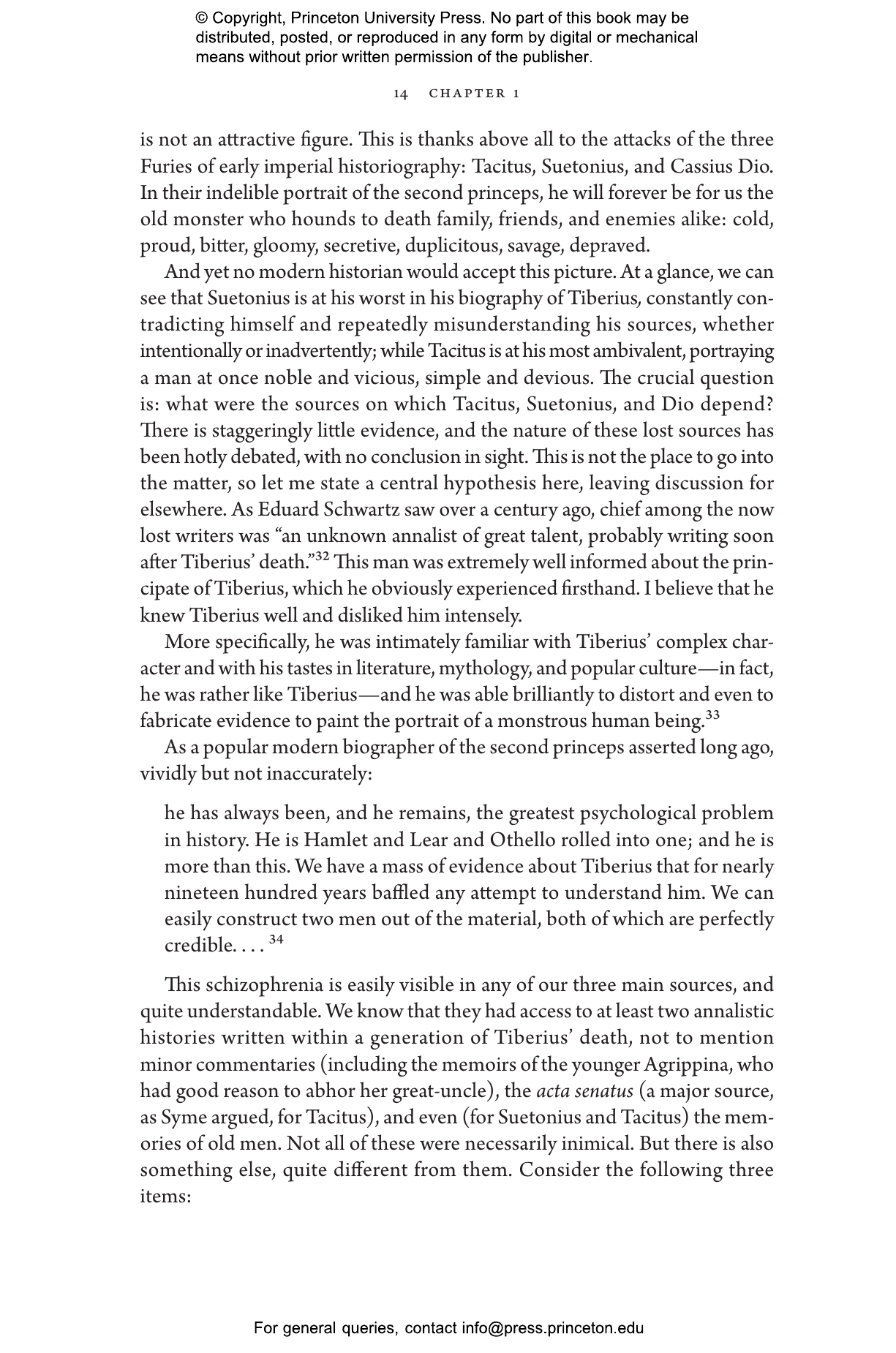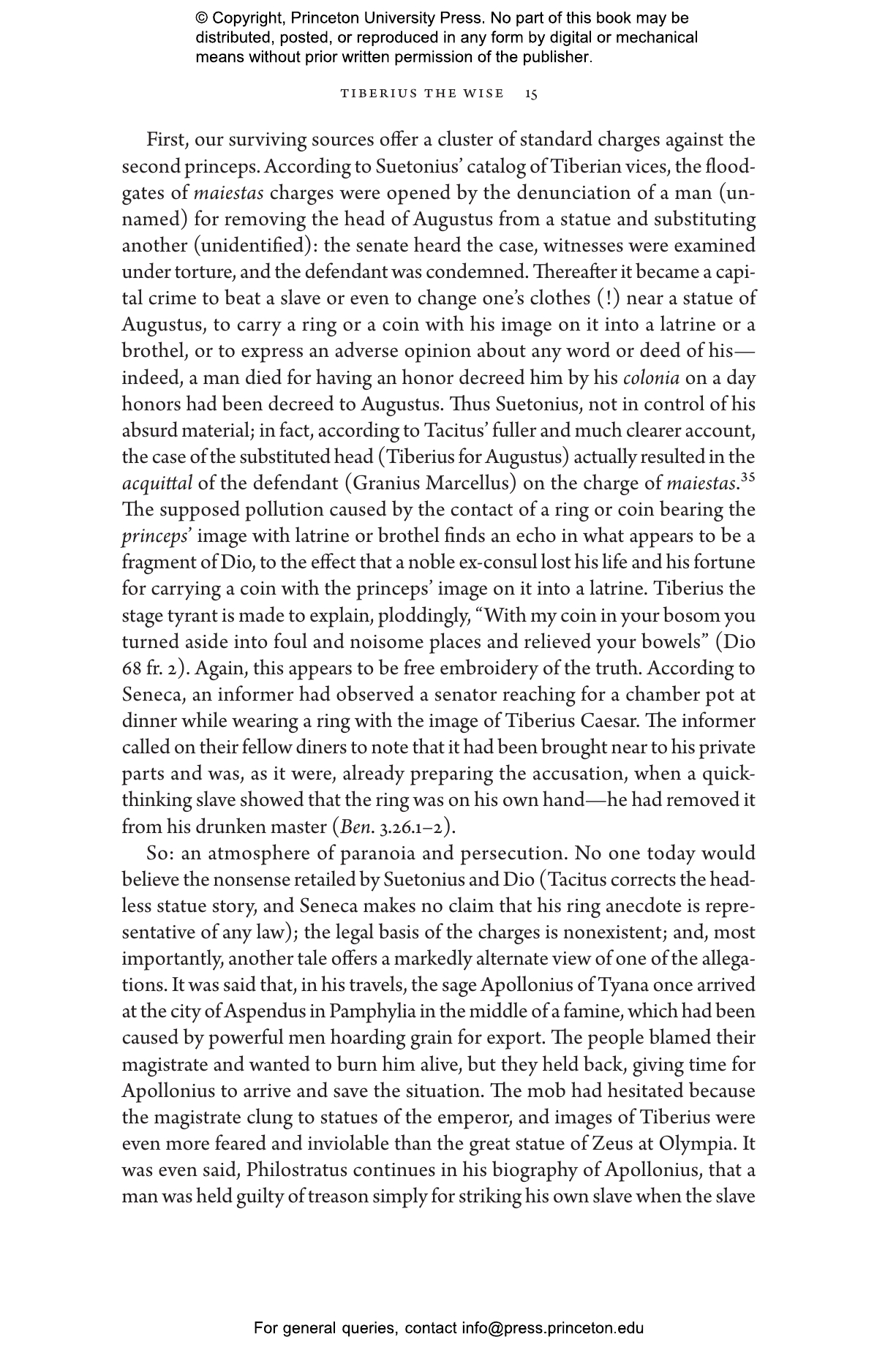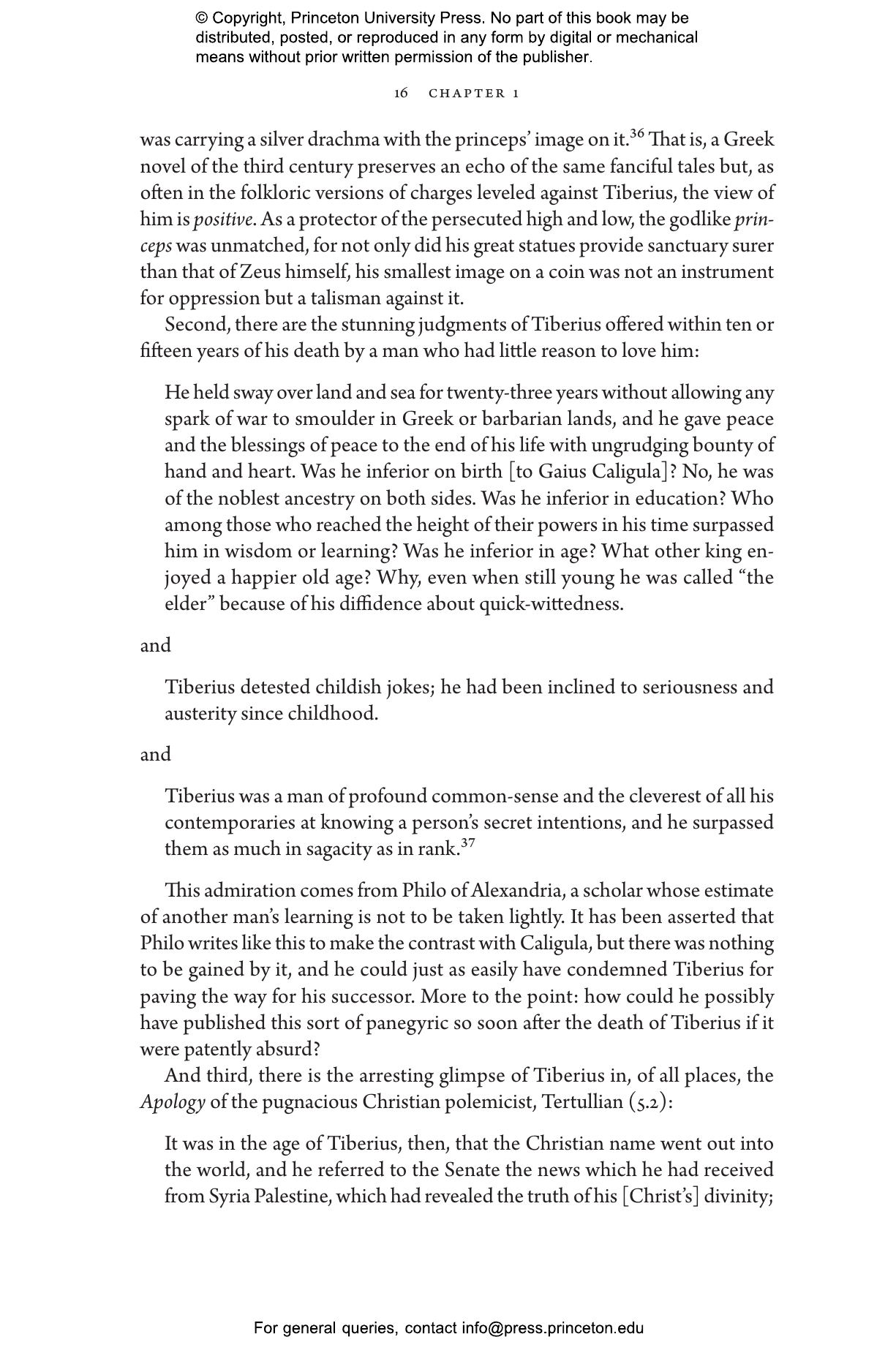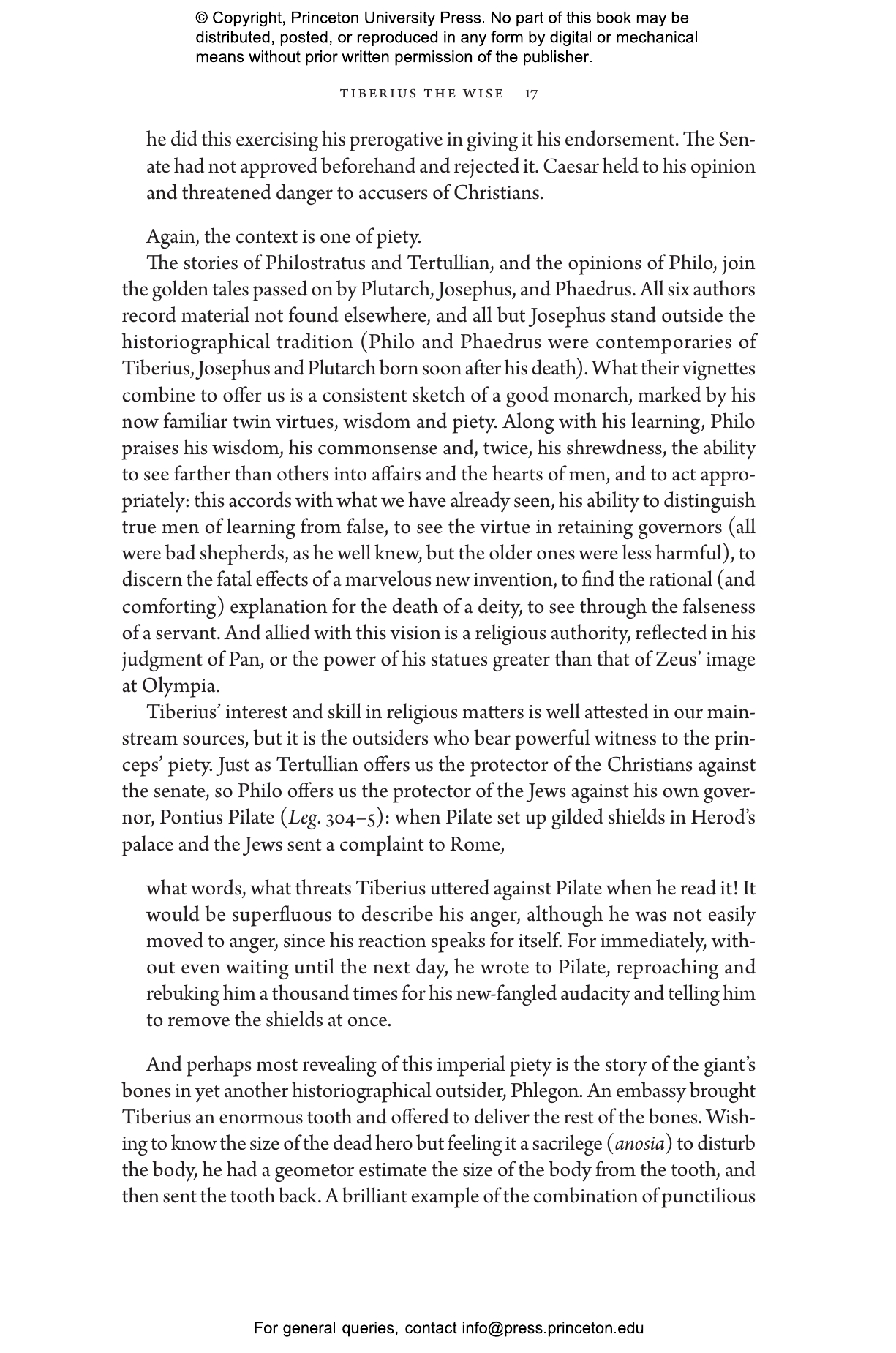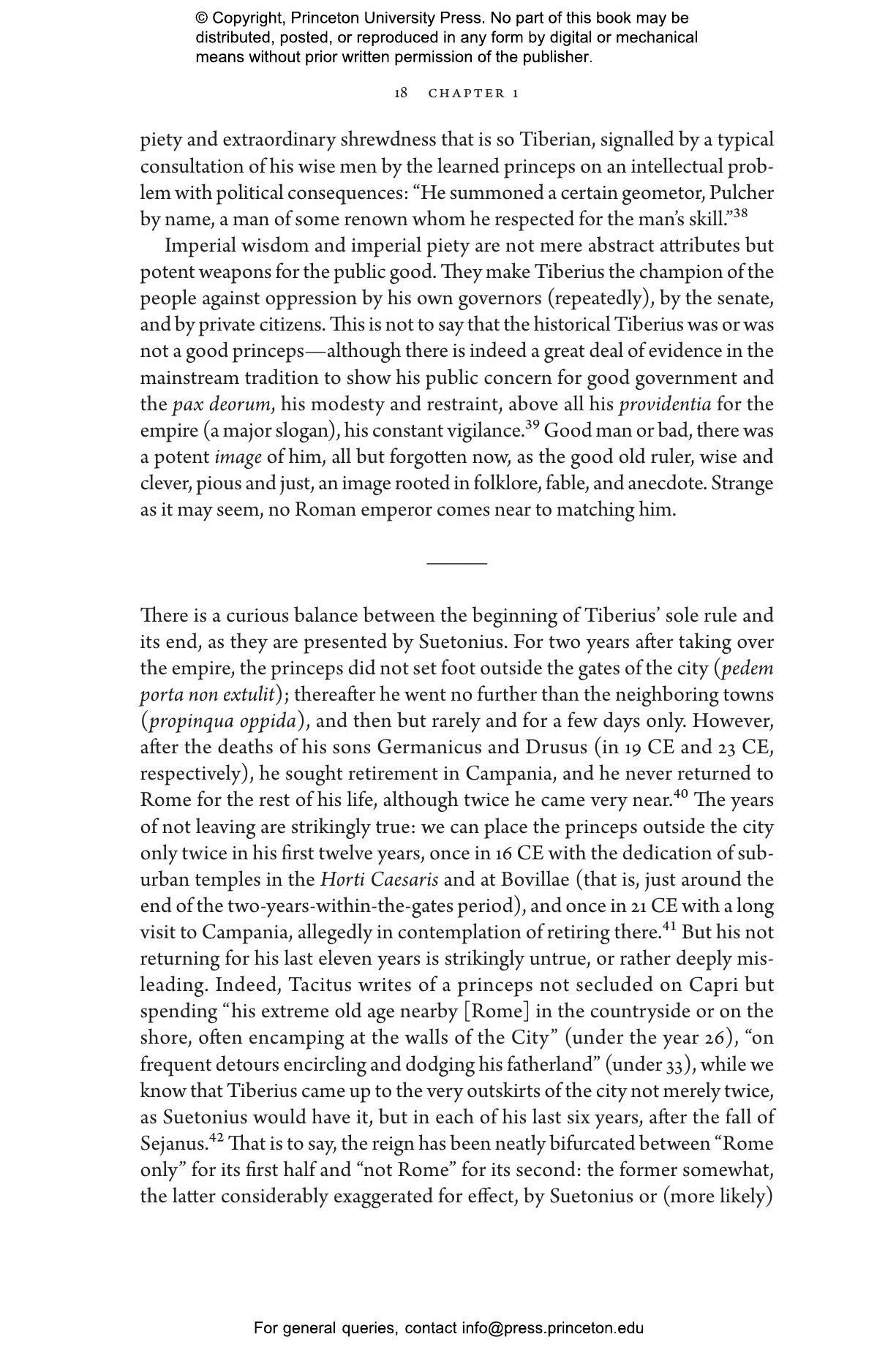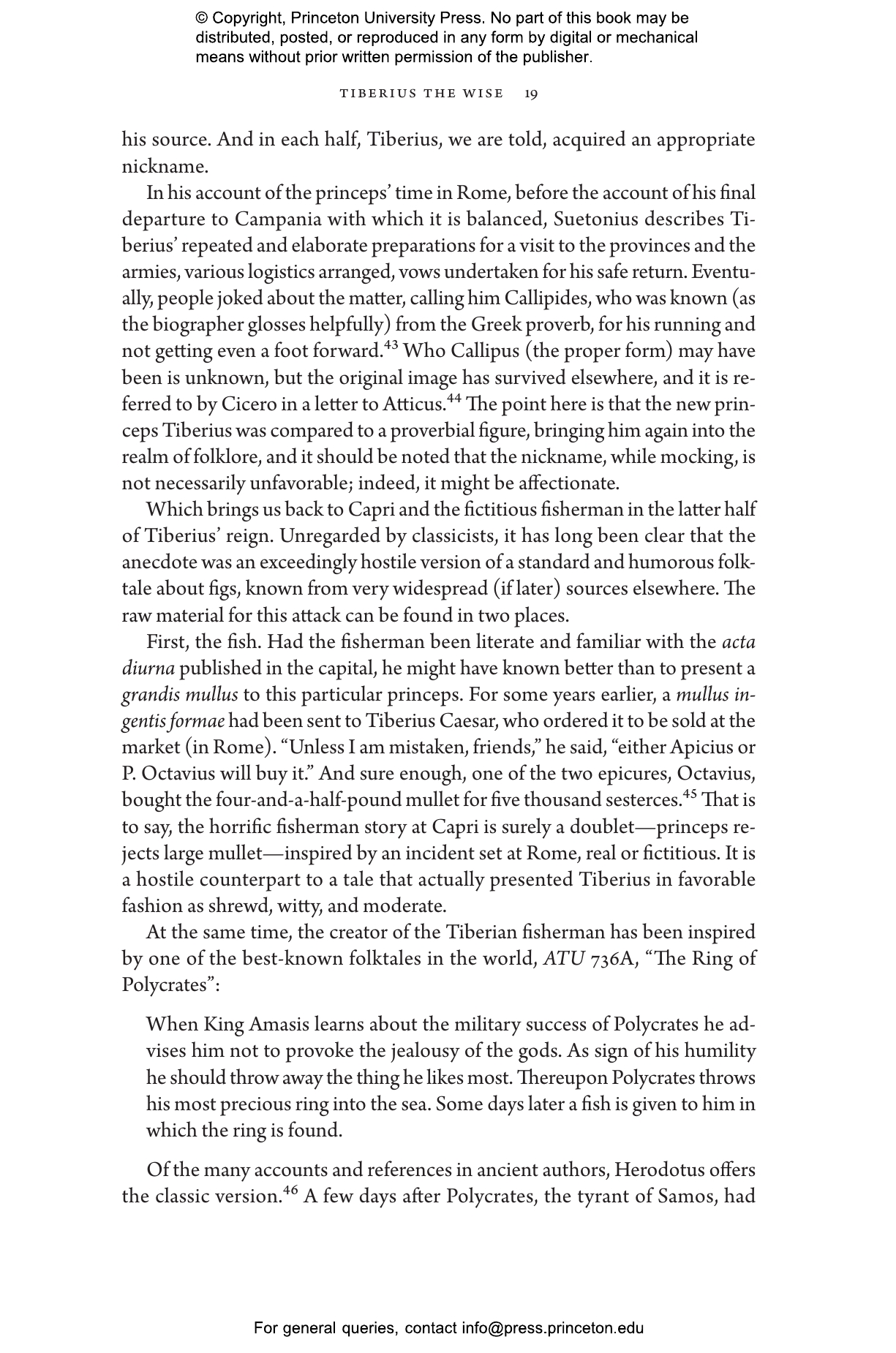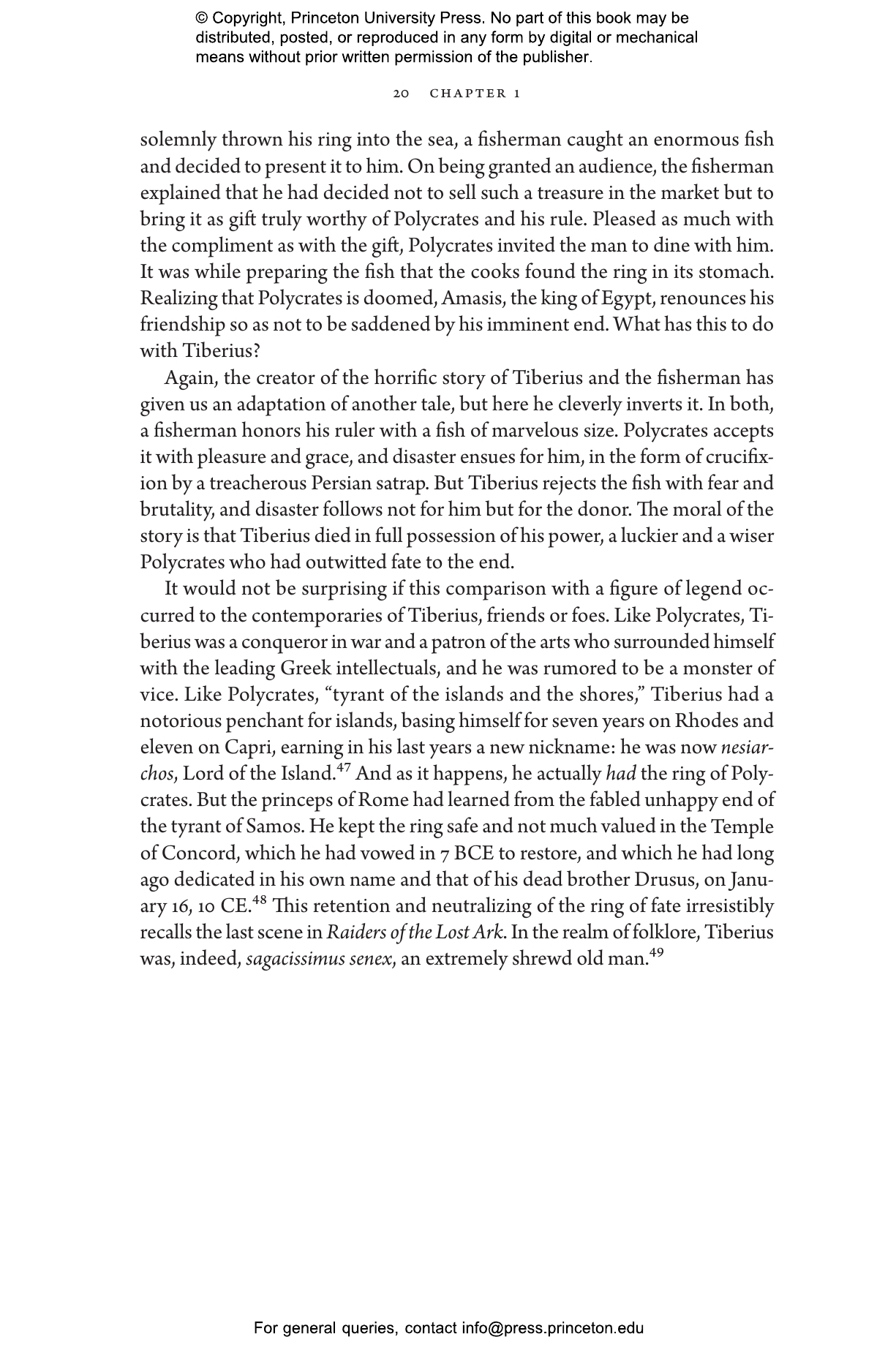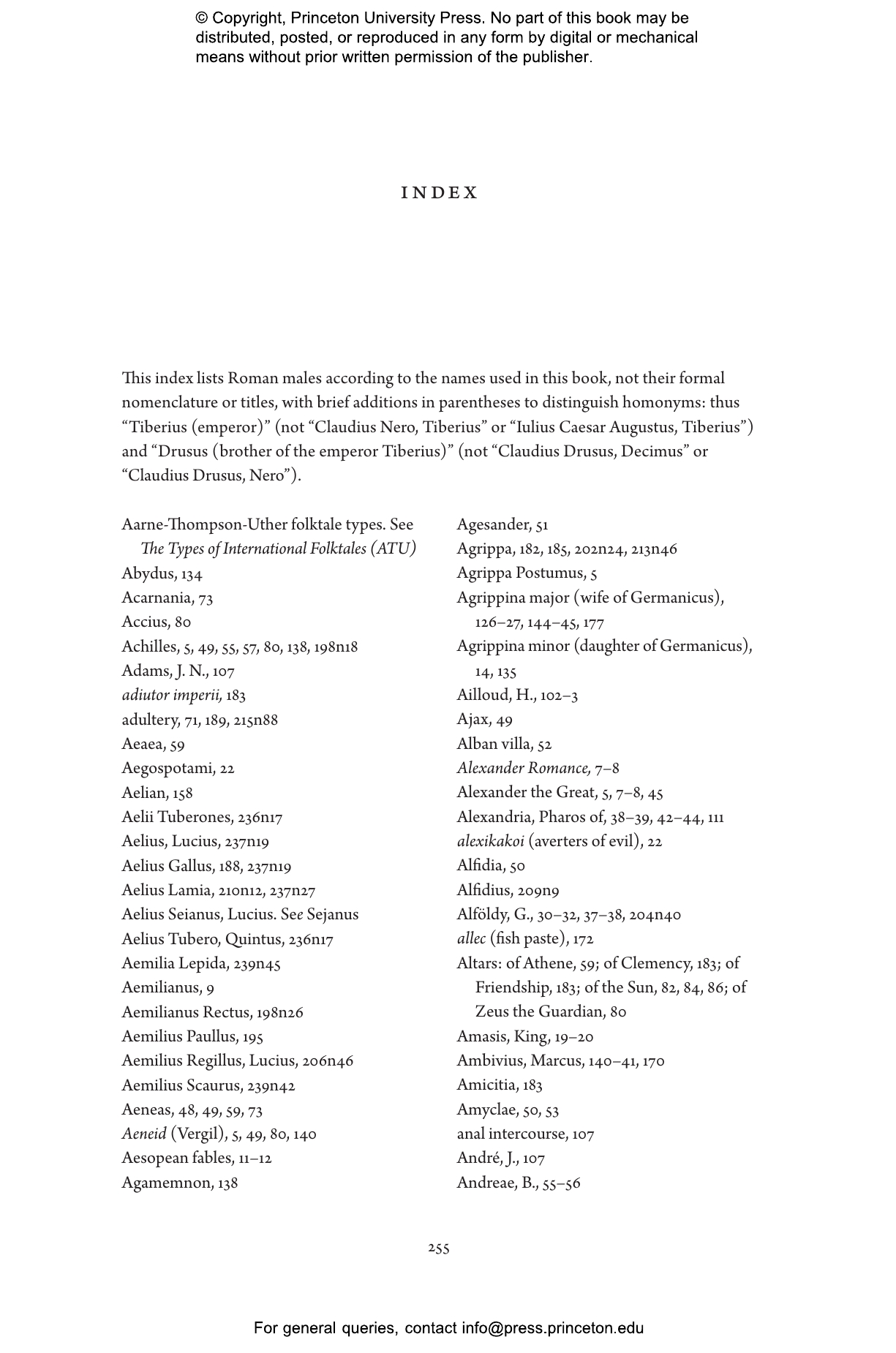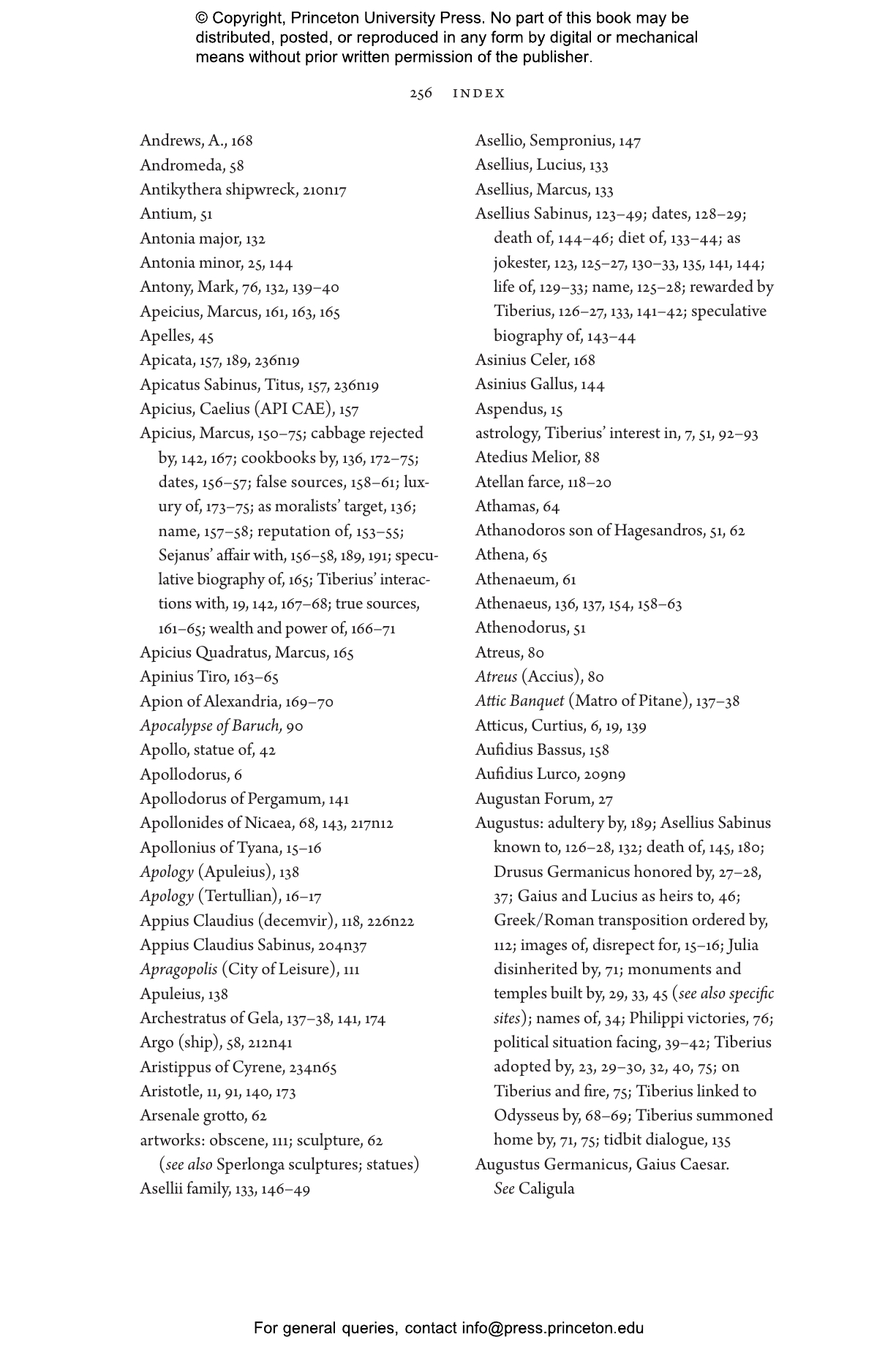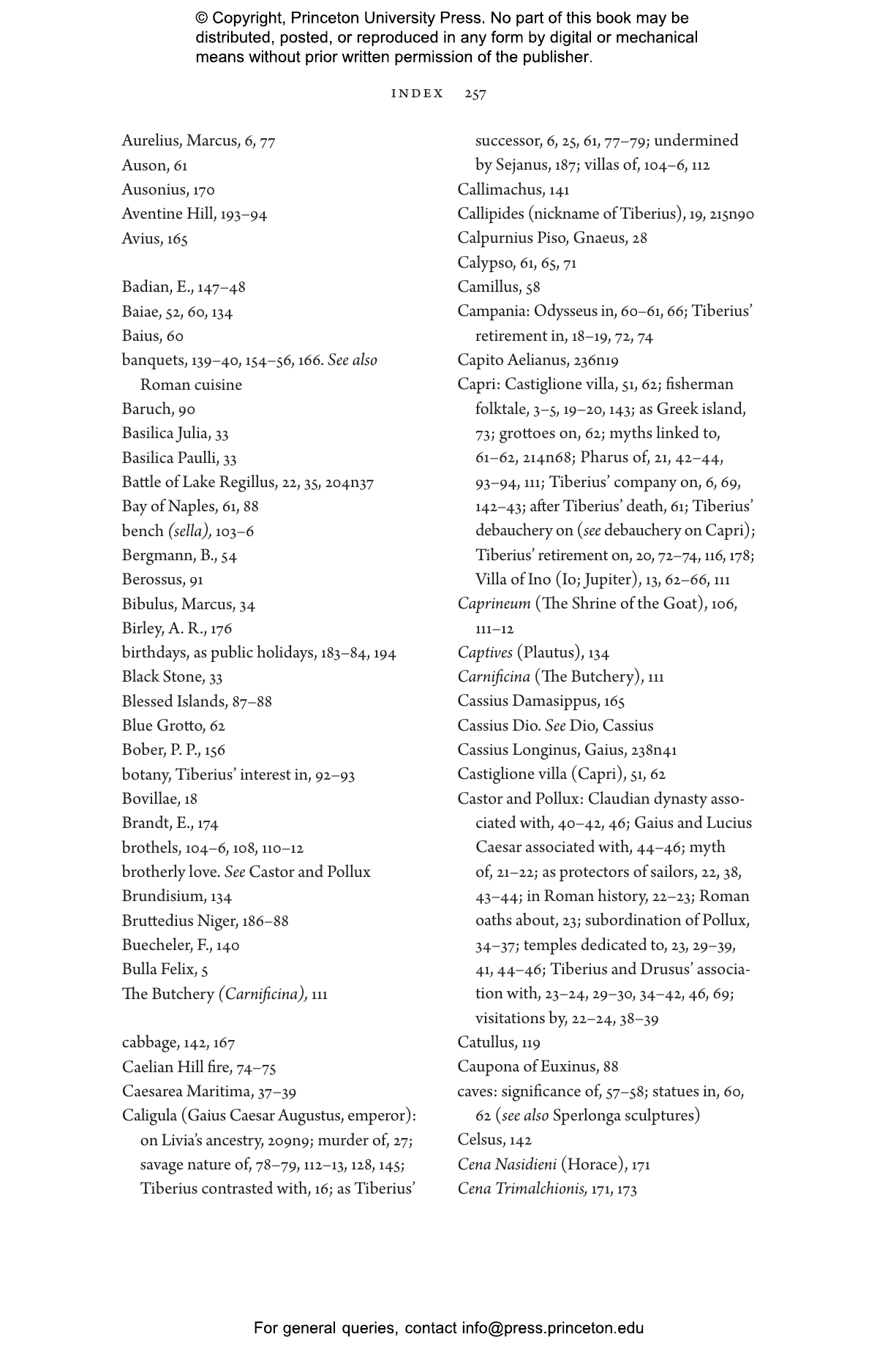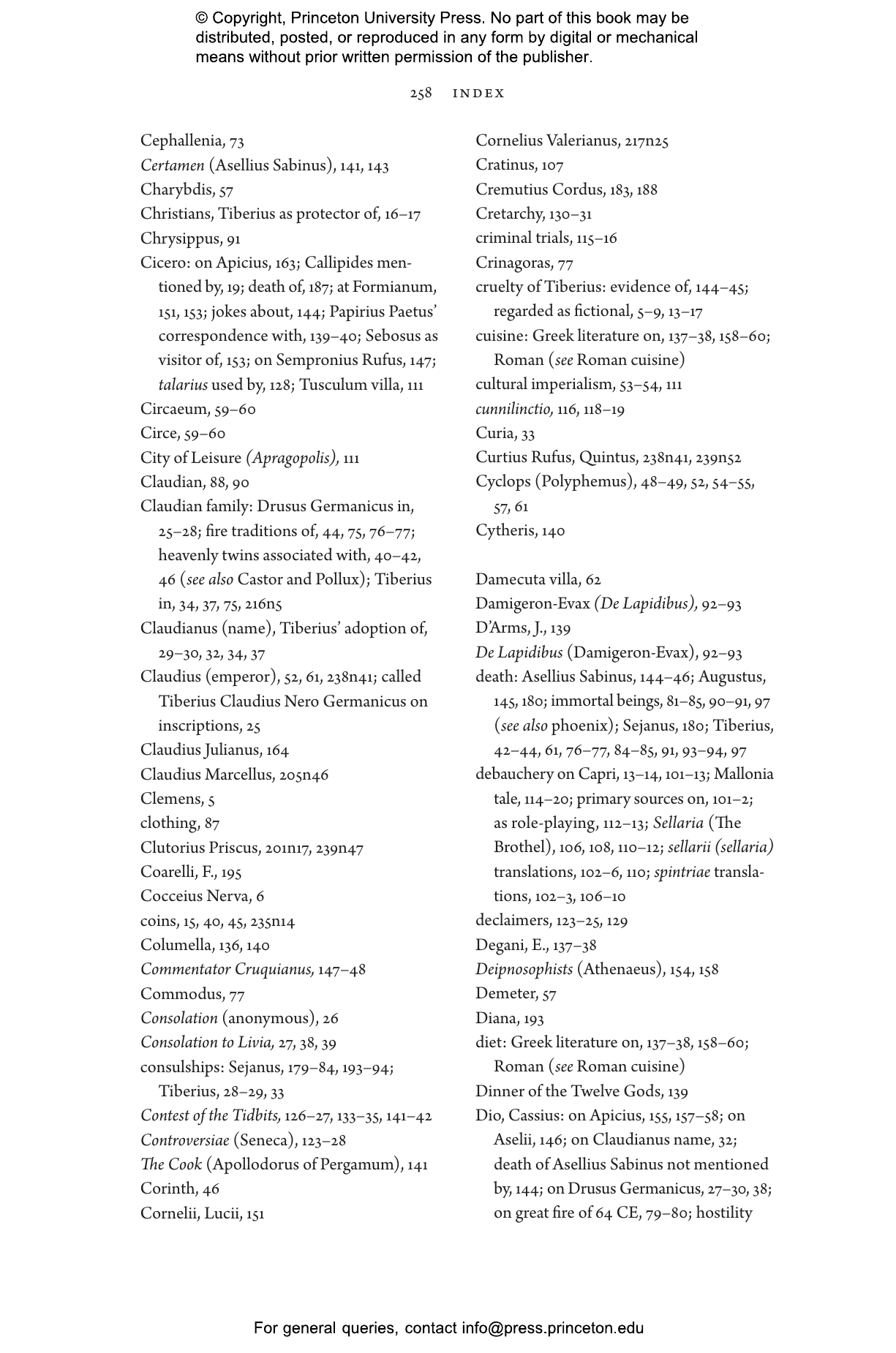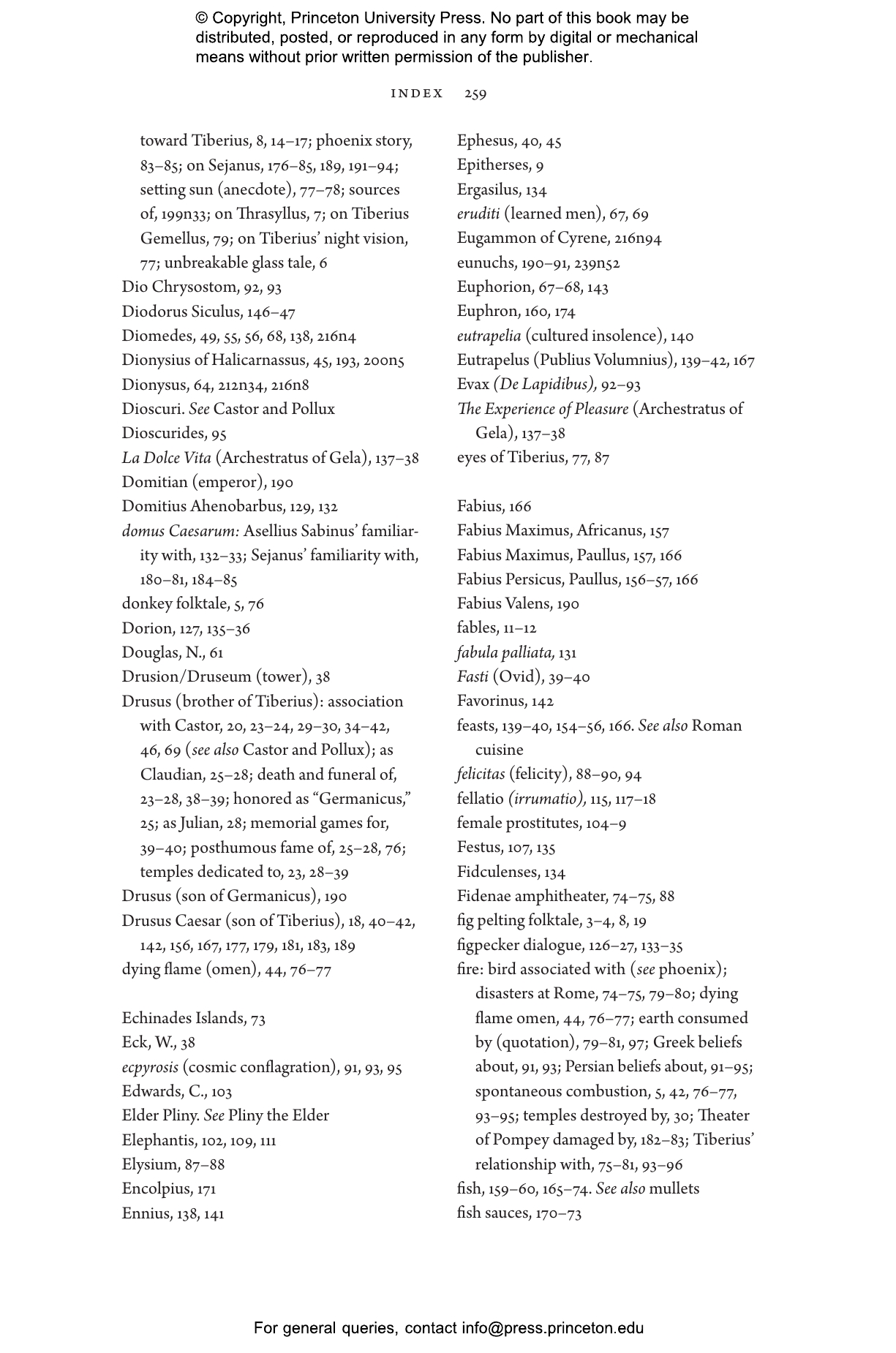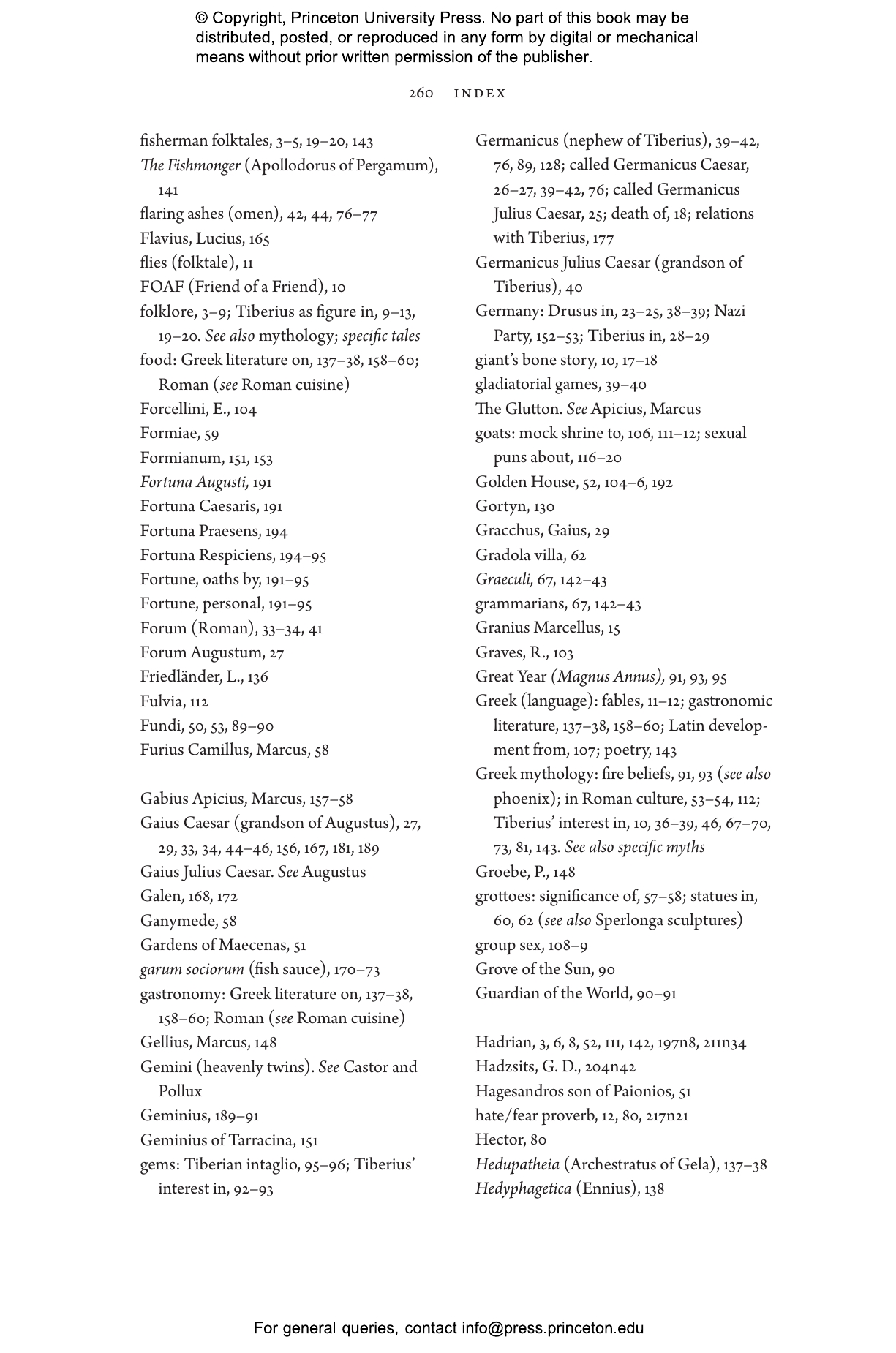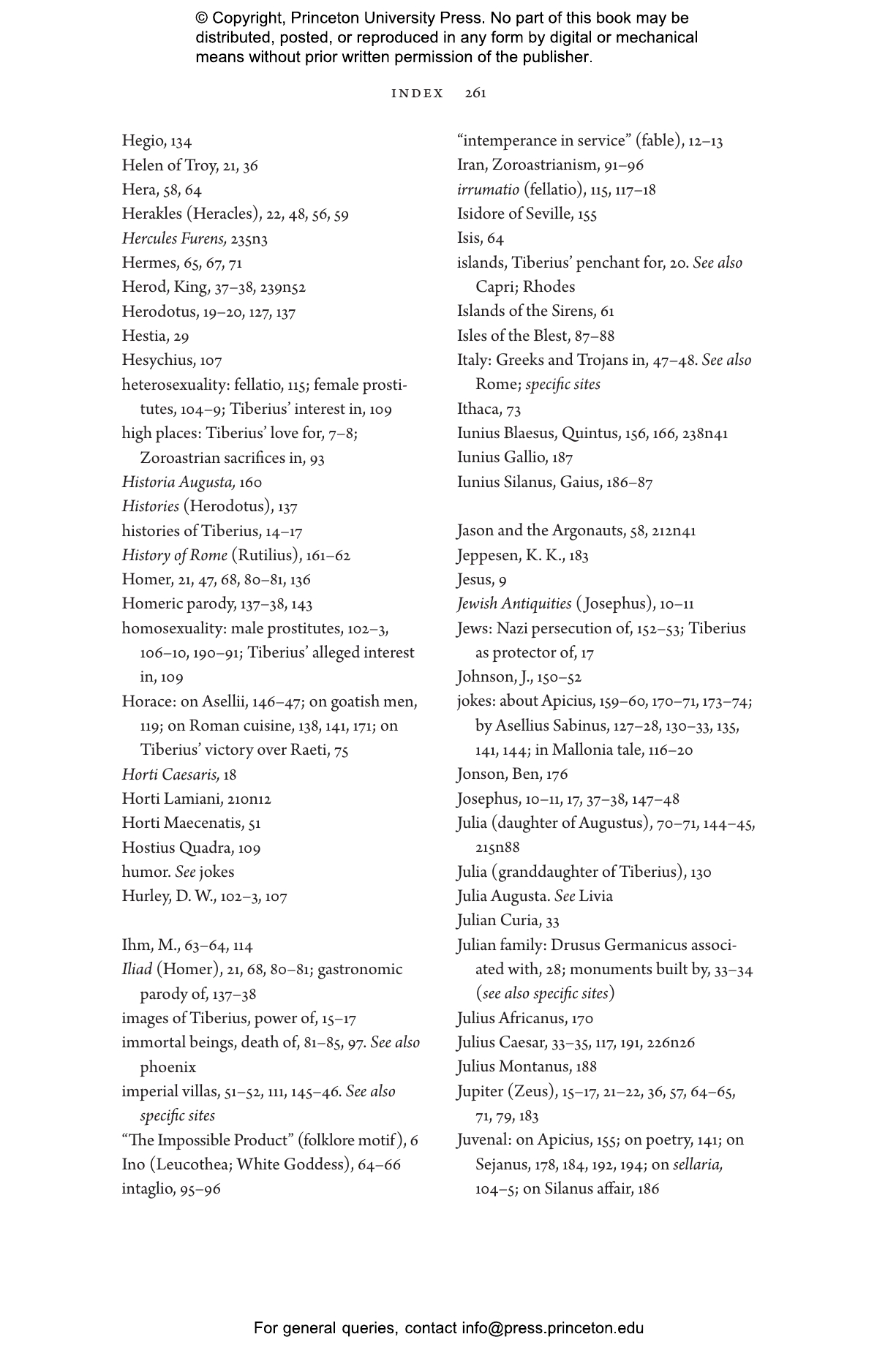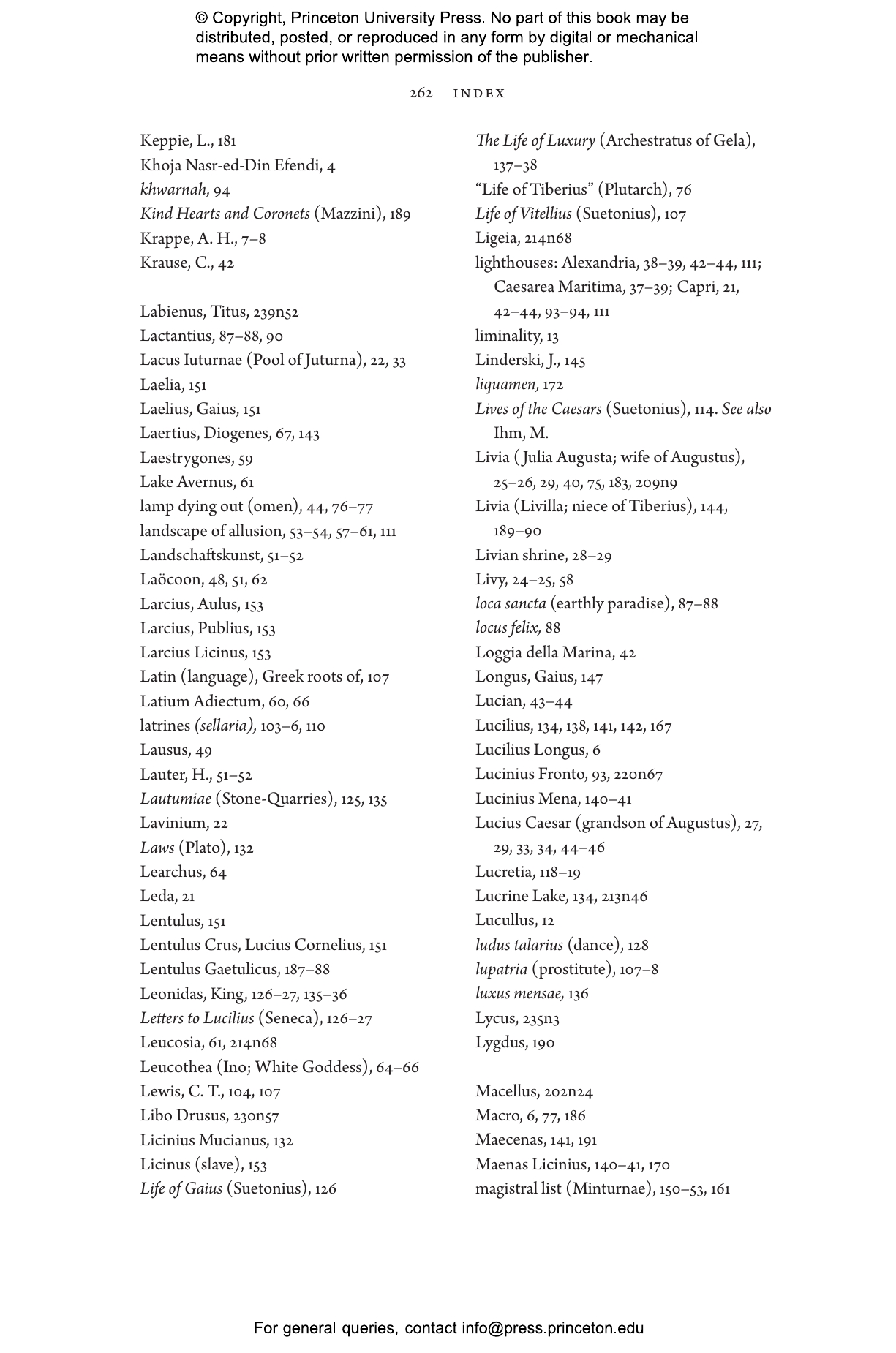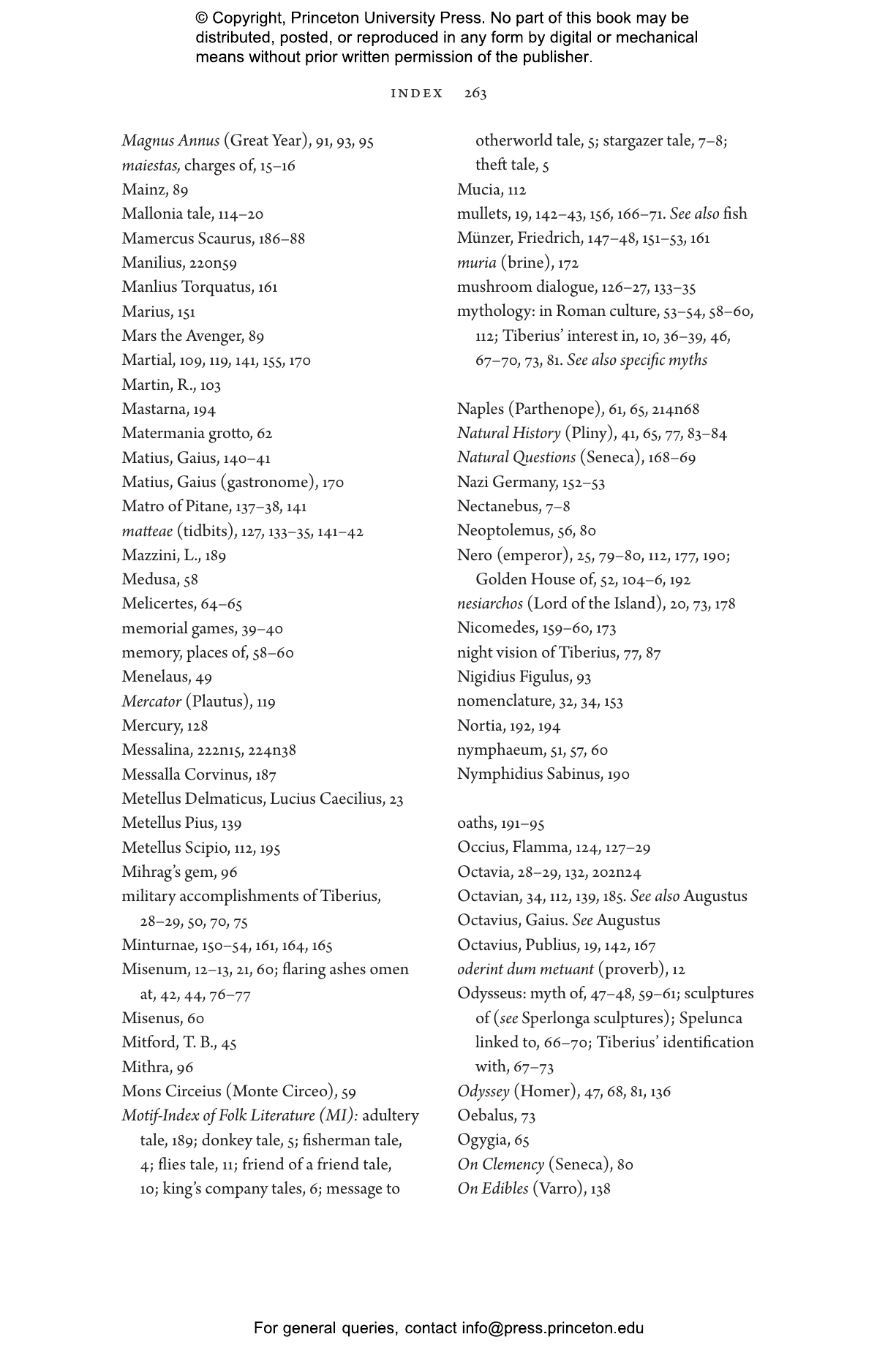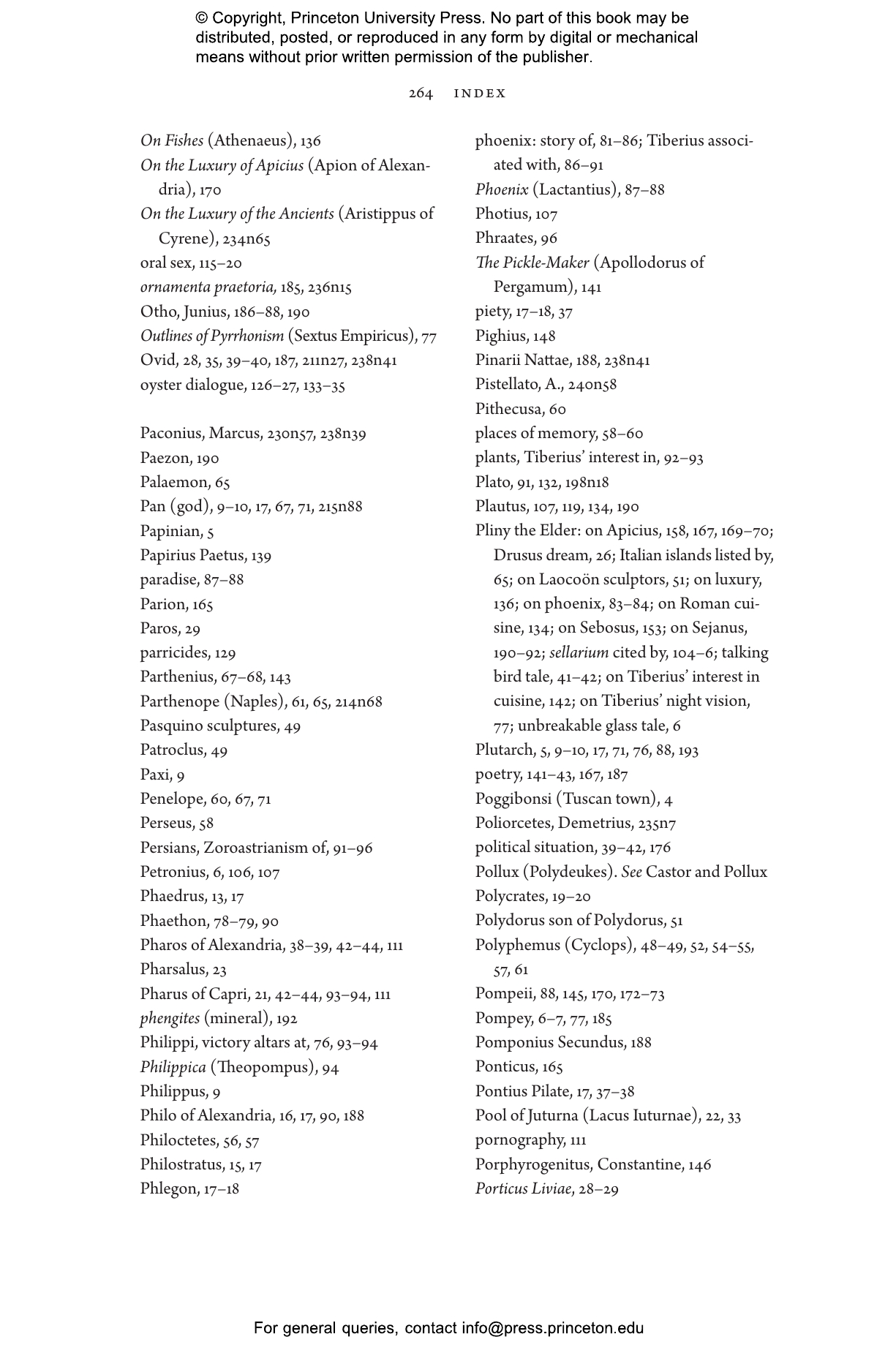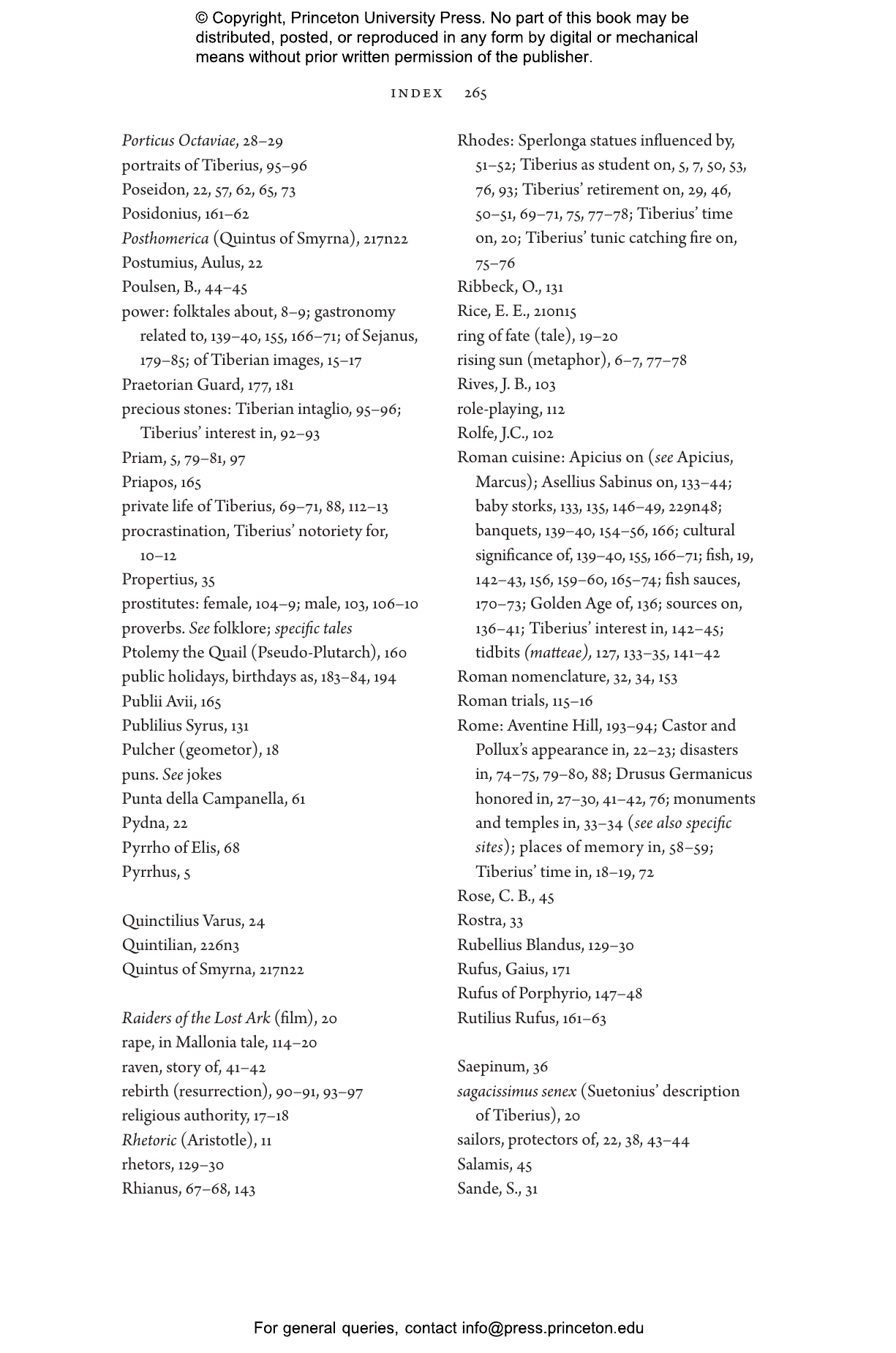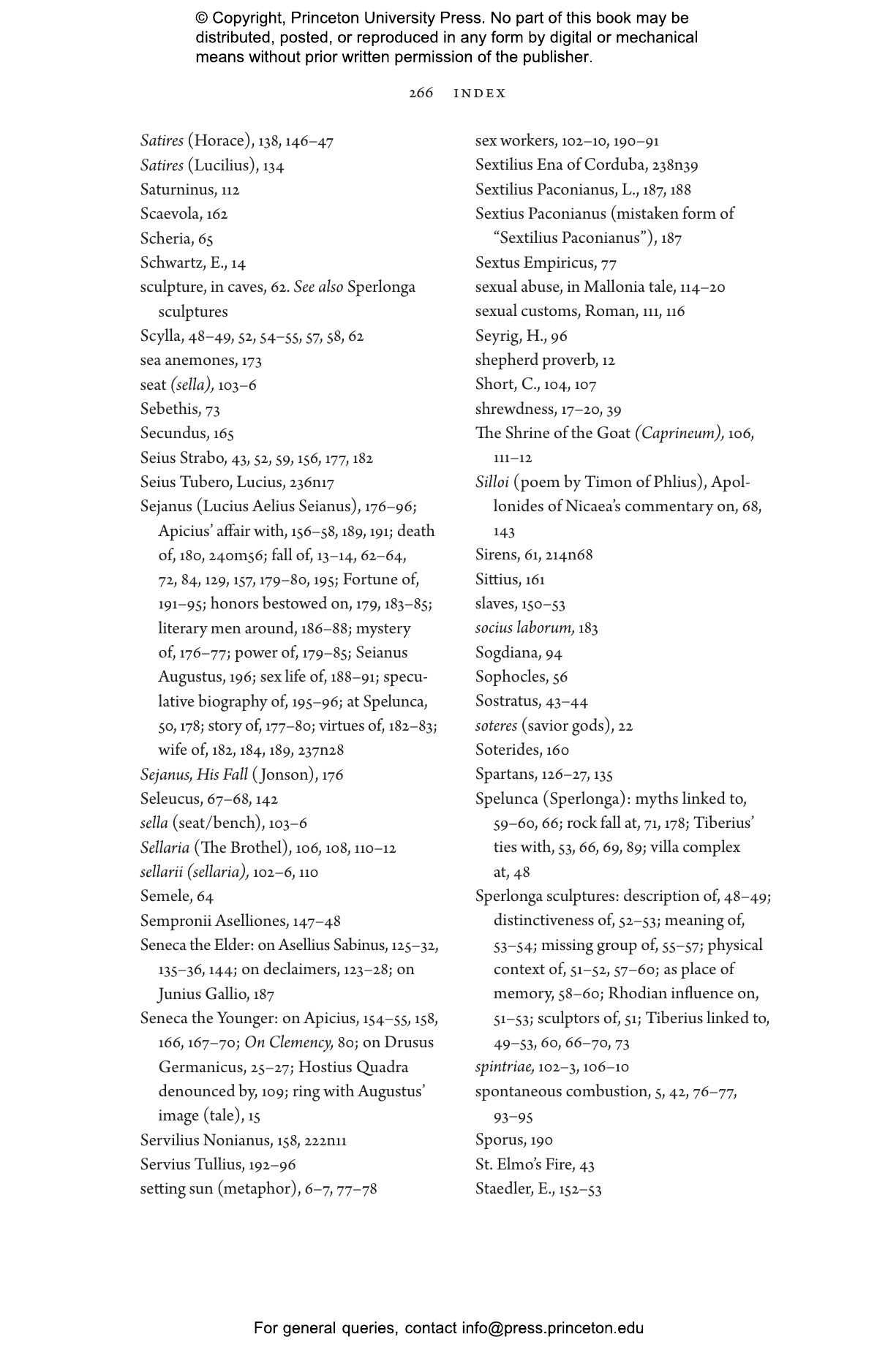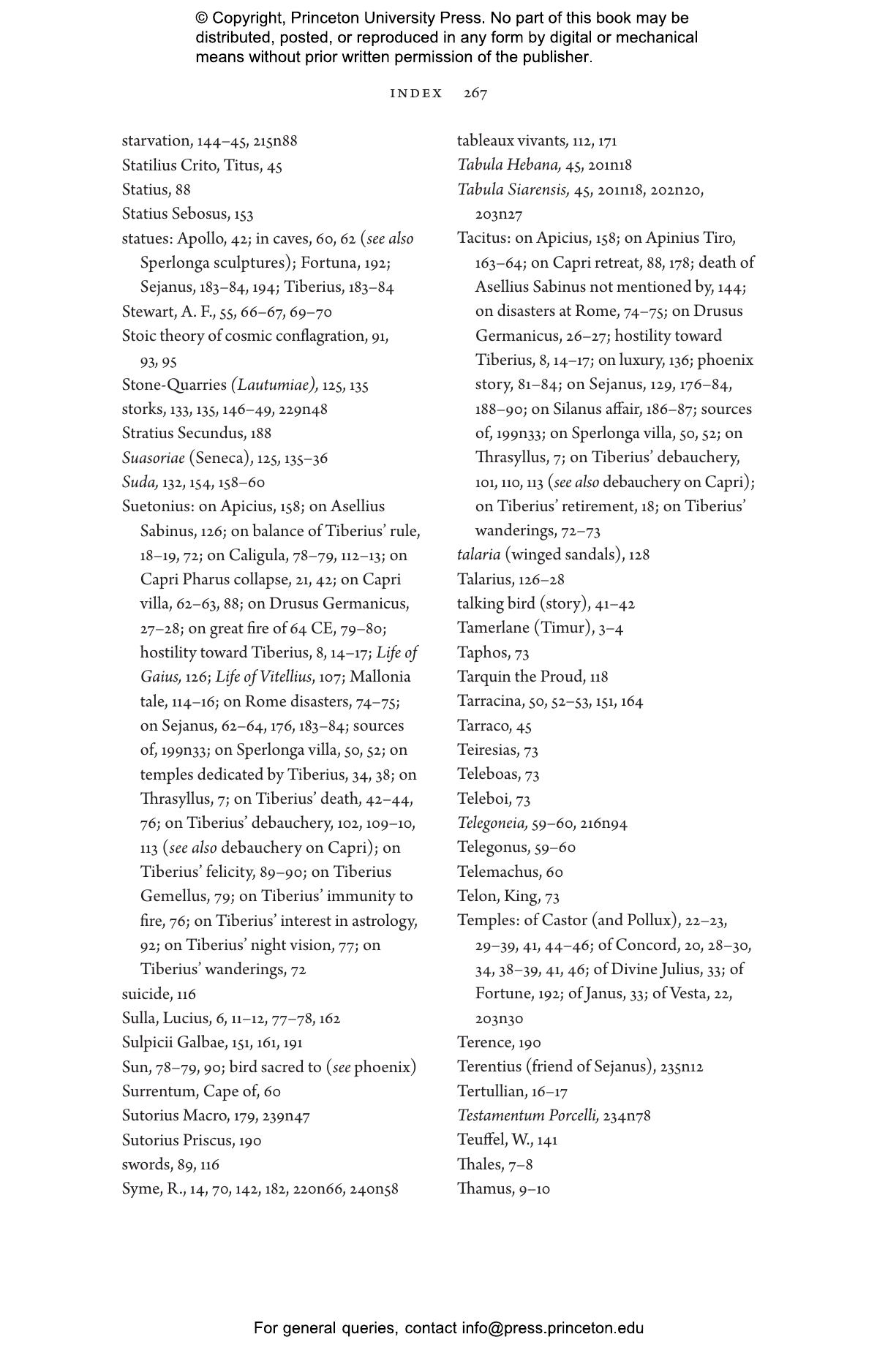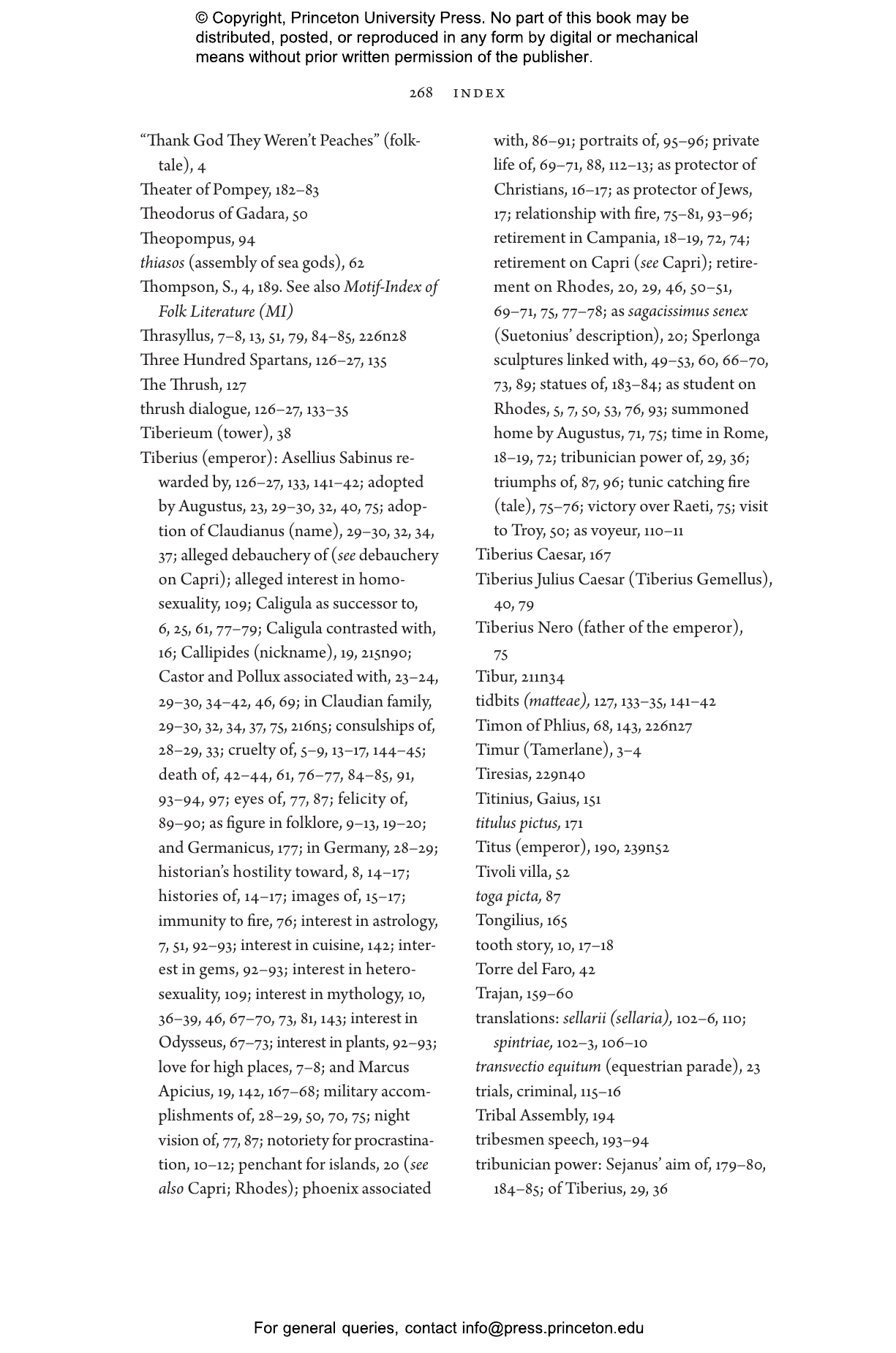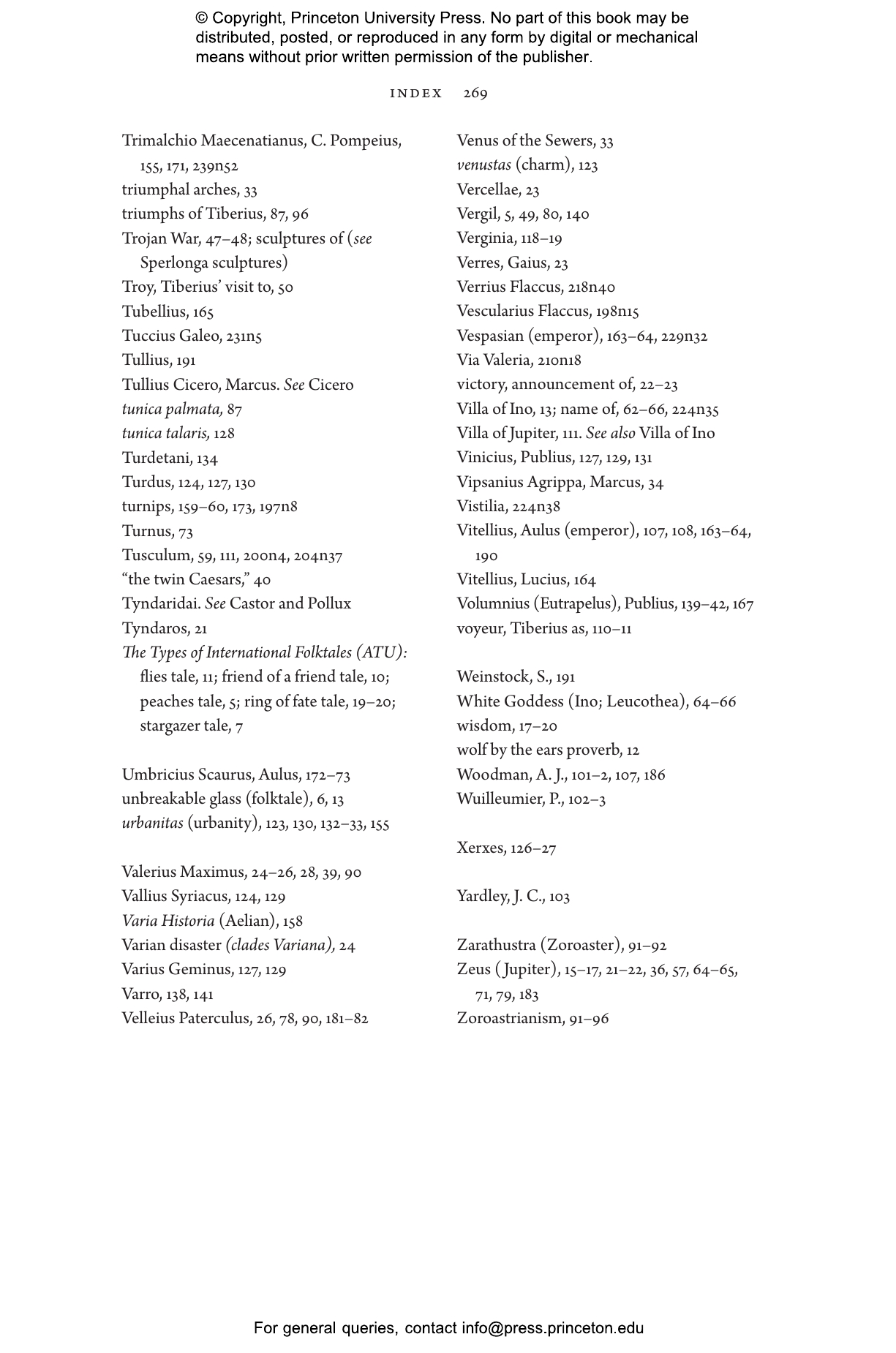Rome’s second emperor, Tiberius (42 BCE–CE 37), has traditionally been seen as a villainous hypocrite—treacherous, grasping, vindictive, and depraved. But in Tiberius and His Age, Edward Champlin draws on vast and diverse evidence to show that Tiberius was—and was seen by contemporaries to be—recognizably human and far more complex than the monster of the hostile tradition that began with Tacitus and Suetonius.
Focusing on the overlapping themes of luxury, sex, power, and, especially, myth, Tiberius and His Age examines Tiberius’s standing as a folkloric figure in the Roman popular imagination and his conscious use of mythological themes to consolidate his power. It argues that the striking stories of Tiberius’s sexual depravity, which literary sources passed on to later generations, are ultimately incoherent fictions, the work of a brilliant fantasist who hated the emperor. The book’s portraits of three important figures in Tiberius’s circle—the gourmands Asellius Sabinus and Marcus Apicius and the emperor’s lieutenant, Sejanus—provide new perspectives on the emperor and his age. Tiberius’s passions for astrology, gastronomy, and mythology, which have often been seen as eccentric scholarly diversions, are revealed instead to be central to contemporary Roman debates and keys to understanding his personality, his power, and the lasting image of Roman emperors.
Incisive, witty, and original, Tiberius and His Age presents a startlingly new picture of Tiberius and the culture and politics of the early Roman Empire.
Edward Champlin is professor of classics and Cotsen Professor of the Humanities, emeritus, at 91ÌÒÉ« University. His books include Nero, Final Judgments: Duty and Emotion in Roman Wills, 200 B.C.–A.D. 250, and Fronto and Antonine Rome. Robert A. Kaster is the Kennedy Foundation Professor of Latin, emeritus, at 91ÌÒÉ«. He is the author of, most recently, How to Do the Right Thing: An Ancient Guide to Treating People Fairly (91ÌÒÉ«).
"As a book to get into the mind of Tiberius, this one is par excellence."—Cliff Cunningham, Sun-News Austin
"By reassessing familiar sources and exploring many unfamiliar ones, [Edward Champlin] has produced an imaginative and . . . convincing new portrait of an enigmatic figure."—John Taylor, Classics for AllÂ
"In this bracing revisionist portrait, Champlin dismantles centuries of slander to reveal a Tiberius who was less monster than myth-maker. . . . With sharp readings of figures like Sejanus and Apicius, this erudite and sardonic study reframes imperial eccentricity as political strategy, offering a vivid lens on Rome’s early Empire."—Indulge Magazine
“Wonder, once banished from classics, has been brought back by Edward Champlin, who tells a golden tale. There cannot be a classicist in the world who does not secretly wish to have written this book. Through the keyhole of a tradition that knew the cruel and twisted Emperor Tiberius as a wise man and a warlock, Champlin sees imperial Rome as a cabinet of curiosities wholly unsuspected by traditional historians. Tiberius the sorcerer! All praise to the man who conjured up the emperor’s shade: Champlin is a mage among the magi.”—J. E. Lendon, author of That Tyrant, Persuasion: How Rhetoric Shaped the Roman World
“Tiberius and His Age presents a bold new cultural, social, and political history of this enigmatic but pivotal emperor. The book is distinctive both in its evidence, much of which will be unknown even to specialists, and in the overall picture of Tiberius that emerges from Edward Champlin’s analysis—a more complex, and more sympathetic, figure than that of the traditional narrative. This is a model of how one can write exciting ancient history from a carefully curated blend of familiar and obscure literary sources.”—Carlos F. Noreña, University of California, Berkeley
“Tiberius and His Age brings into focus a whole series of texts that don’t usually get much attention, but that offer insights into the culture and society of the era.”—Alison E. Cooley, University of Warwick
This publication has been produced to meet accepted Accessibility standards and contains various accessibility features including a table of contents, a page list to navigate to pages corresponding to the print source version, and elements such as headings for structured navigation. Appearance of the text and page layout can be modified according to the capabilities of the reading system.
Accessibility Features
-
WCAG v2.2
-
WCAG level AA
-
Table of contents navigation
-
Print-equivalent page numbering
-
Next / Previous structural navigation
-
Landmark navigation
-
Index navigation
-
Epub Accessibility Specification 1.1
-
ARIA roles provided
-
All non-decorative content supports reading without sight
-
No known hazards or warnings


